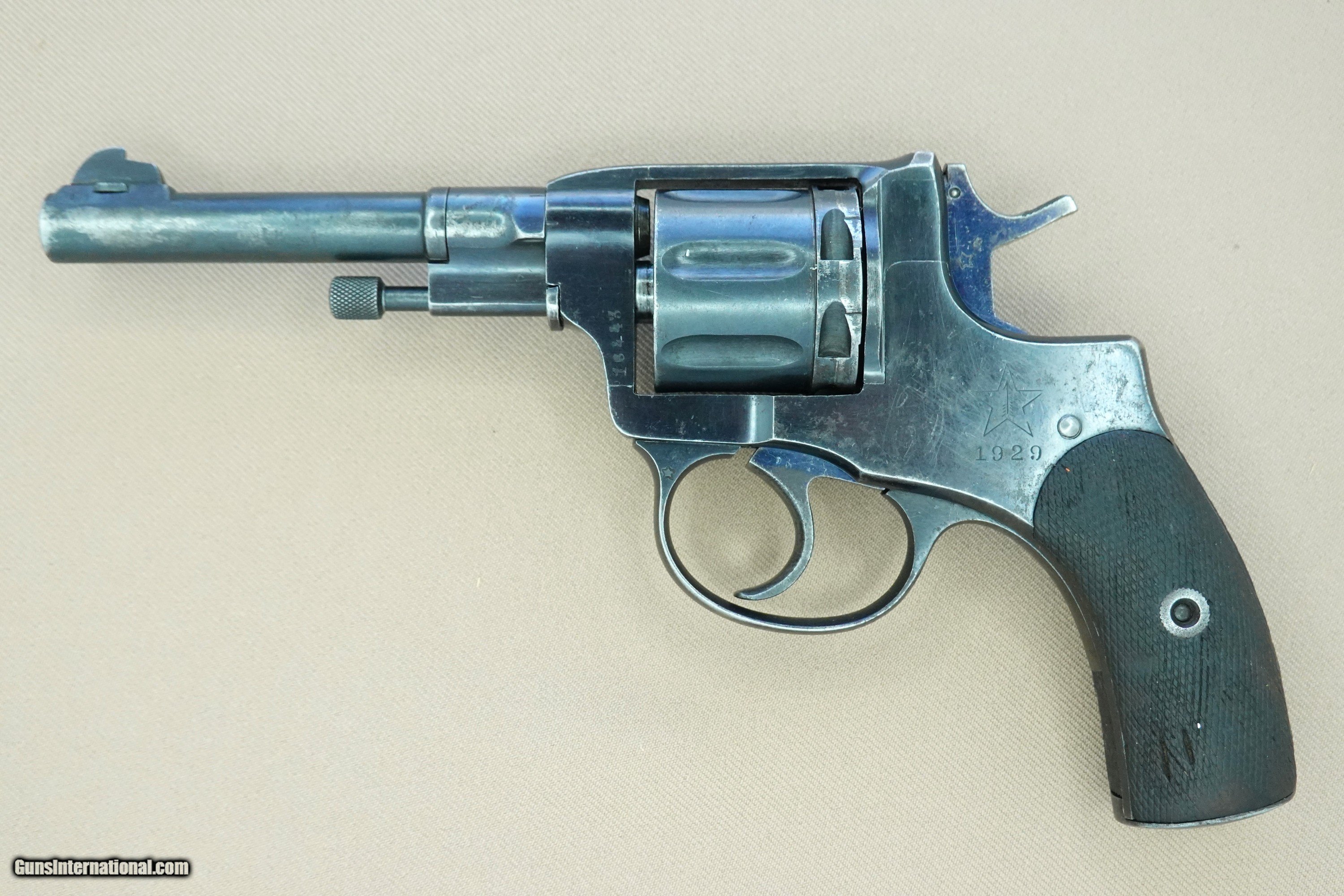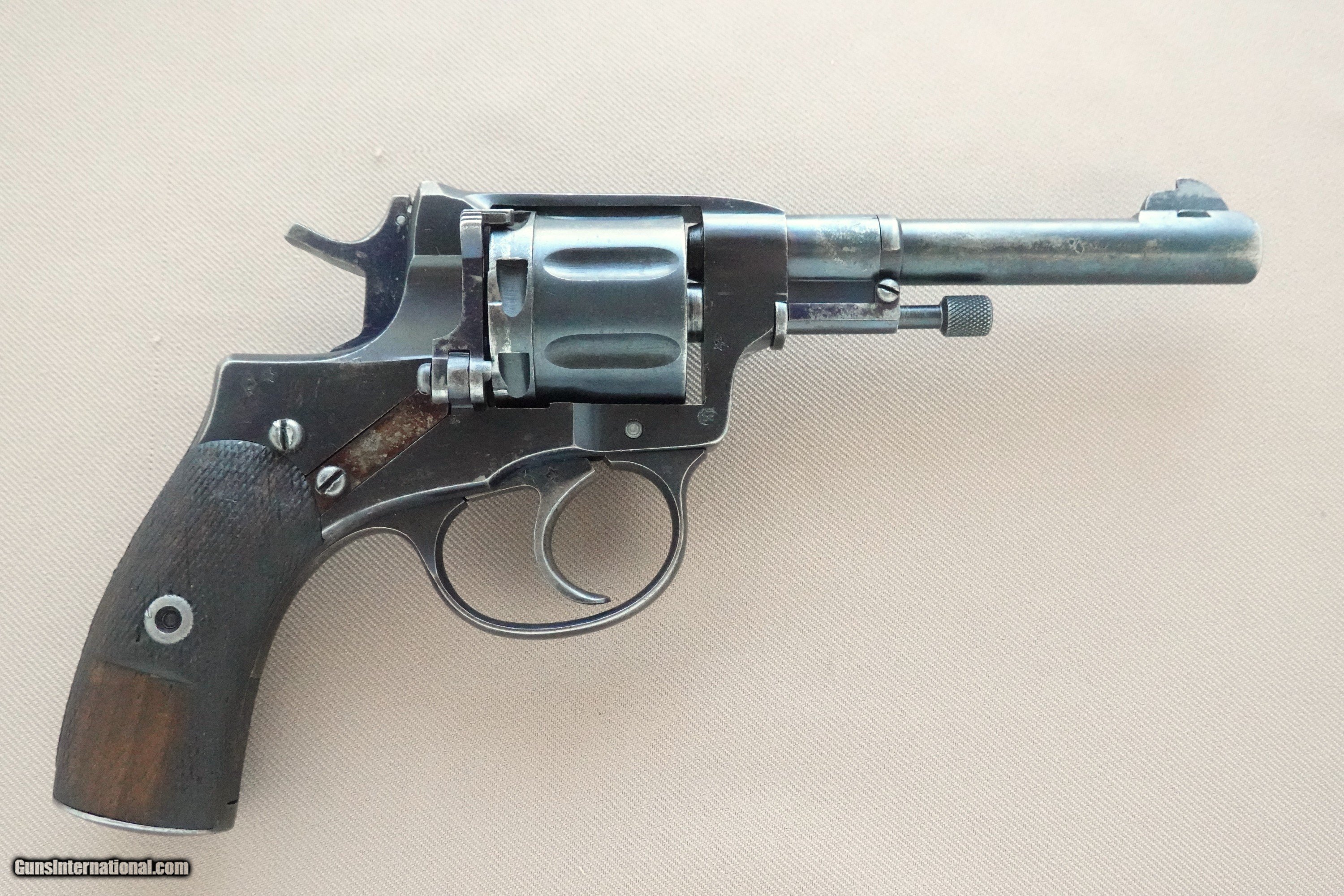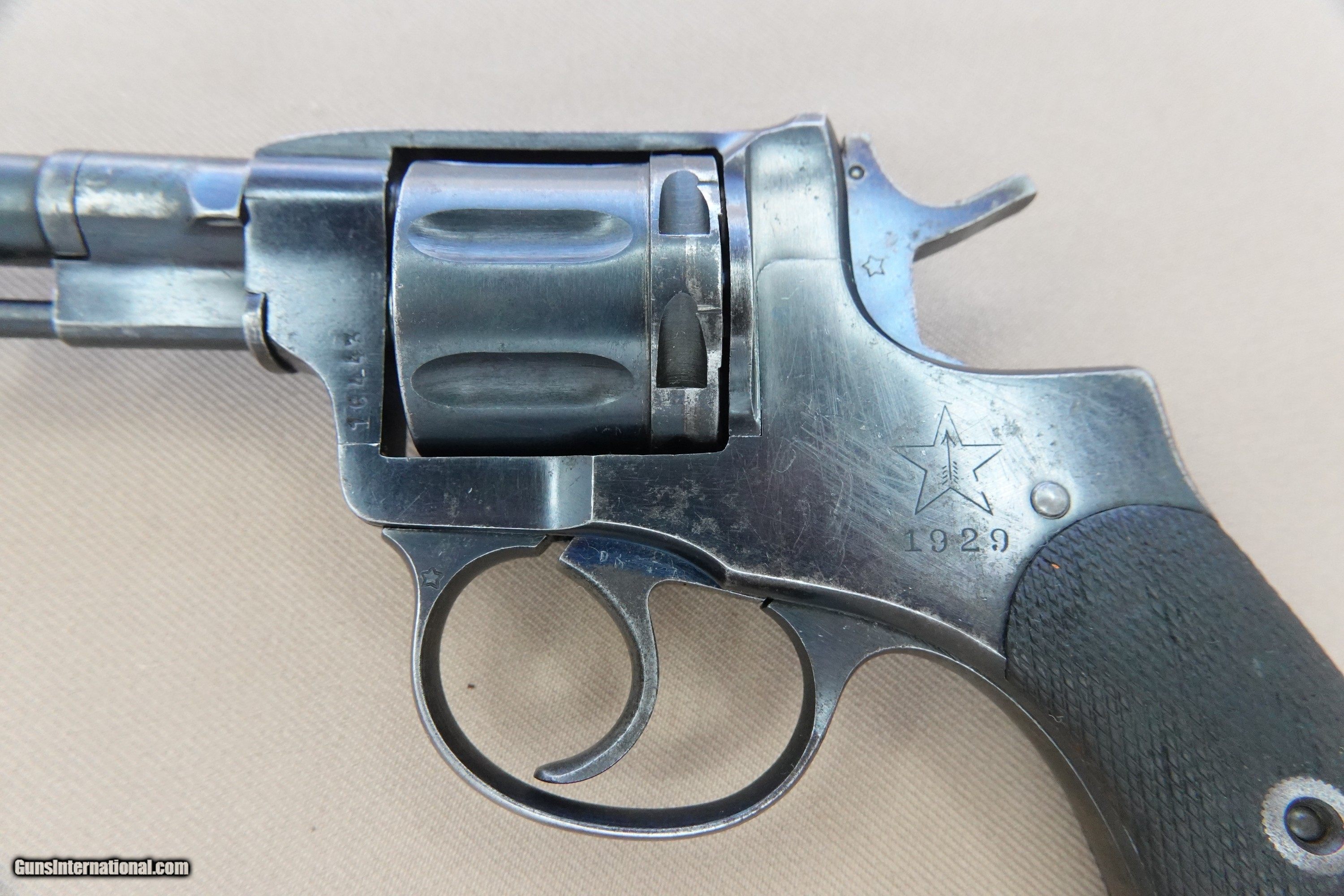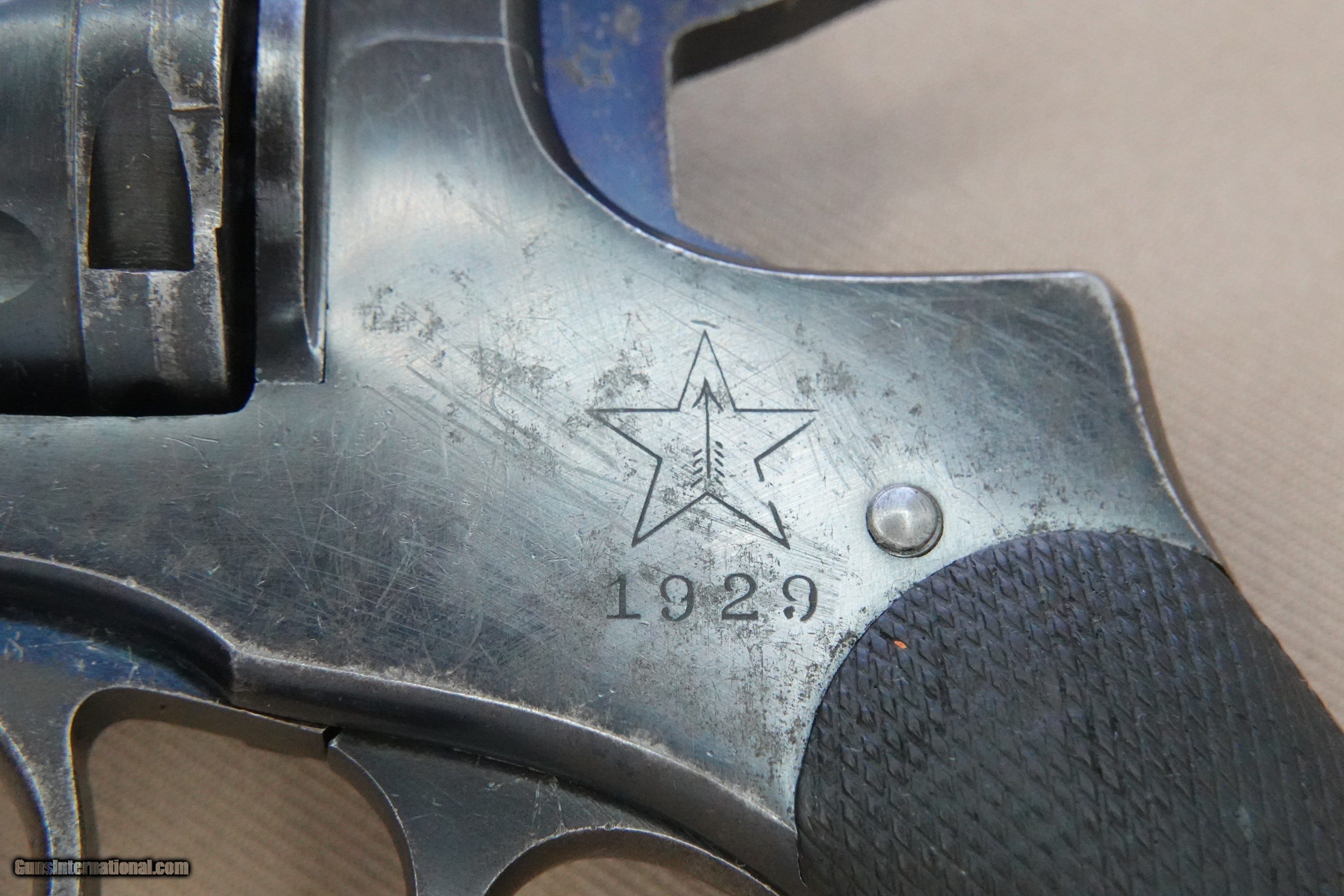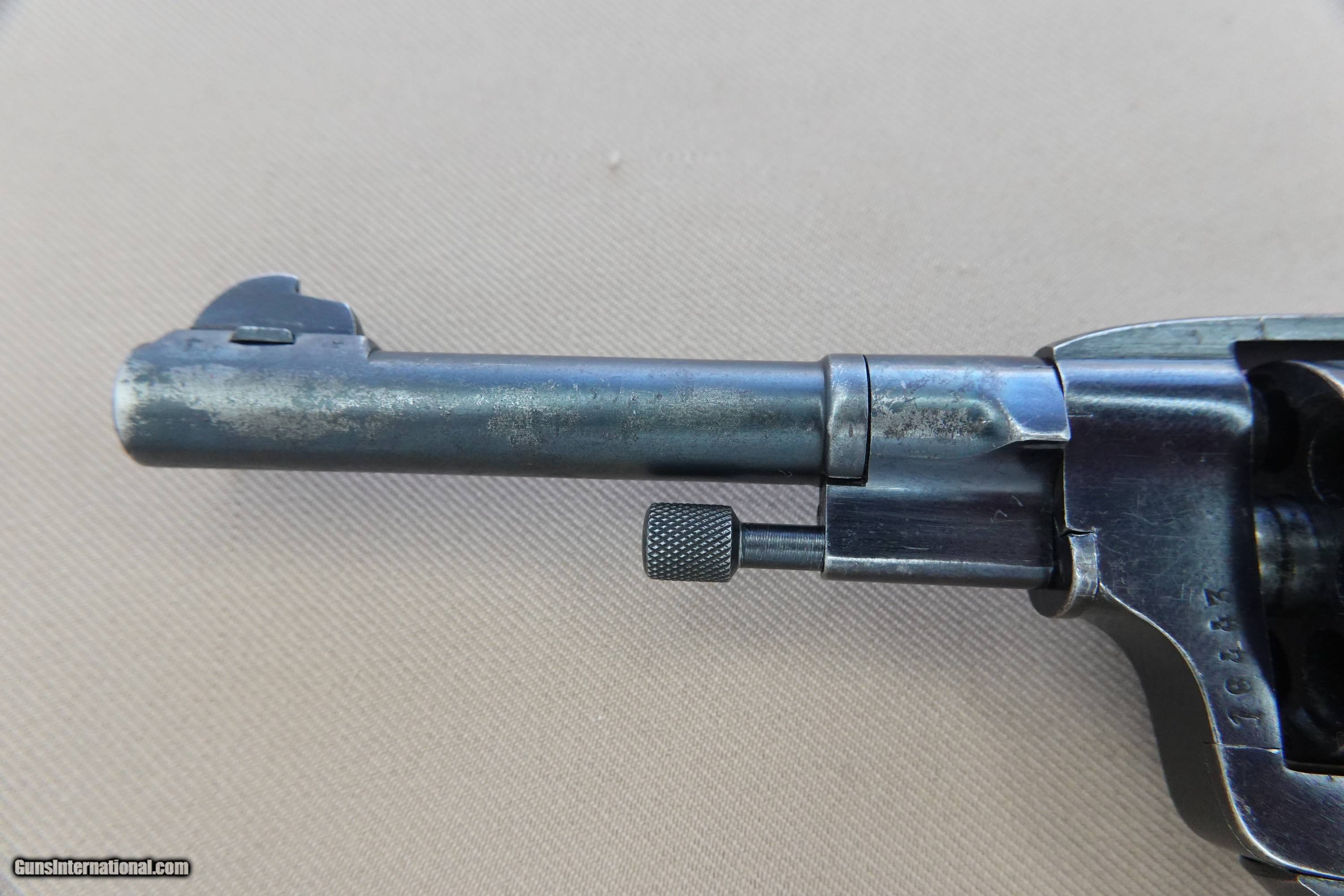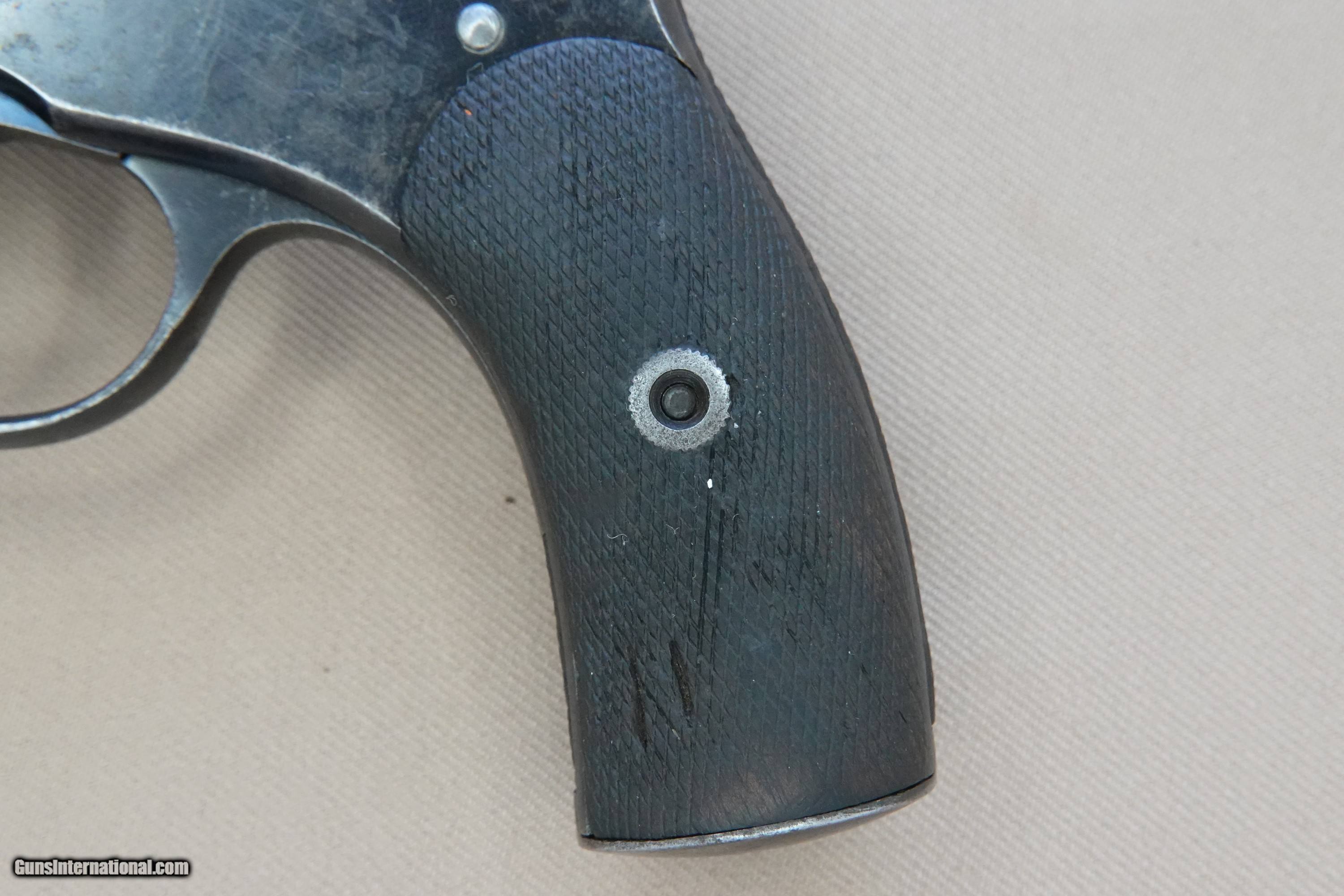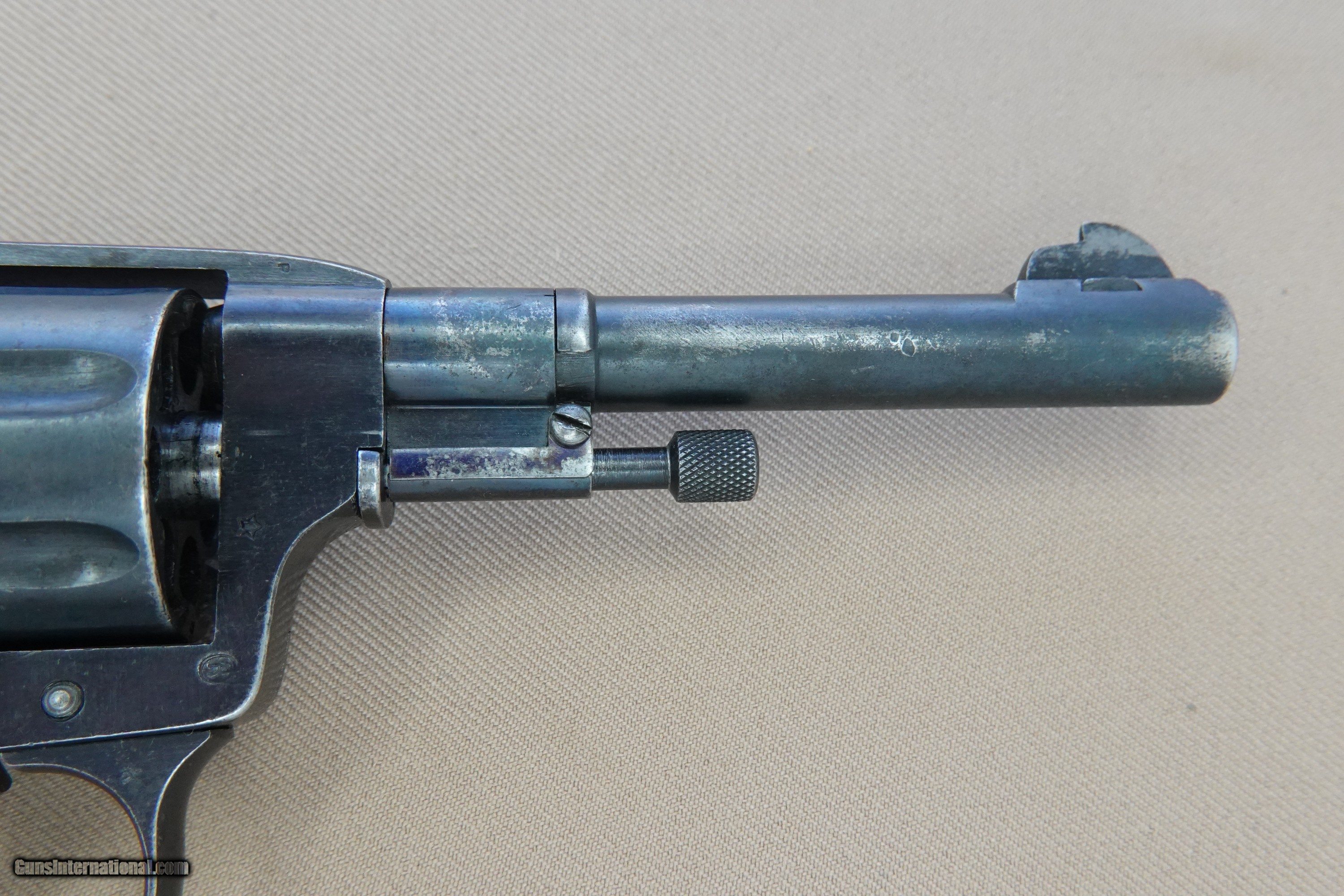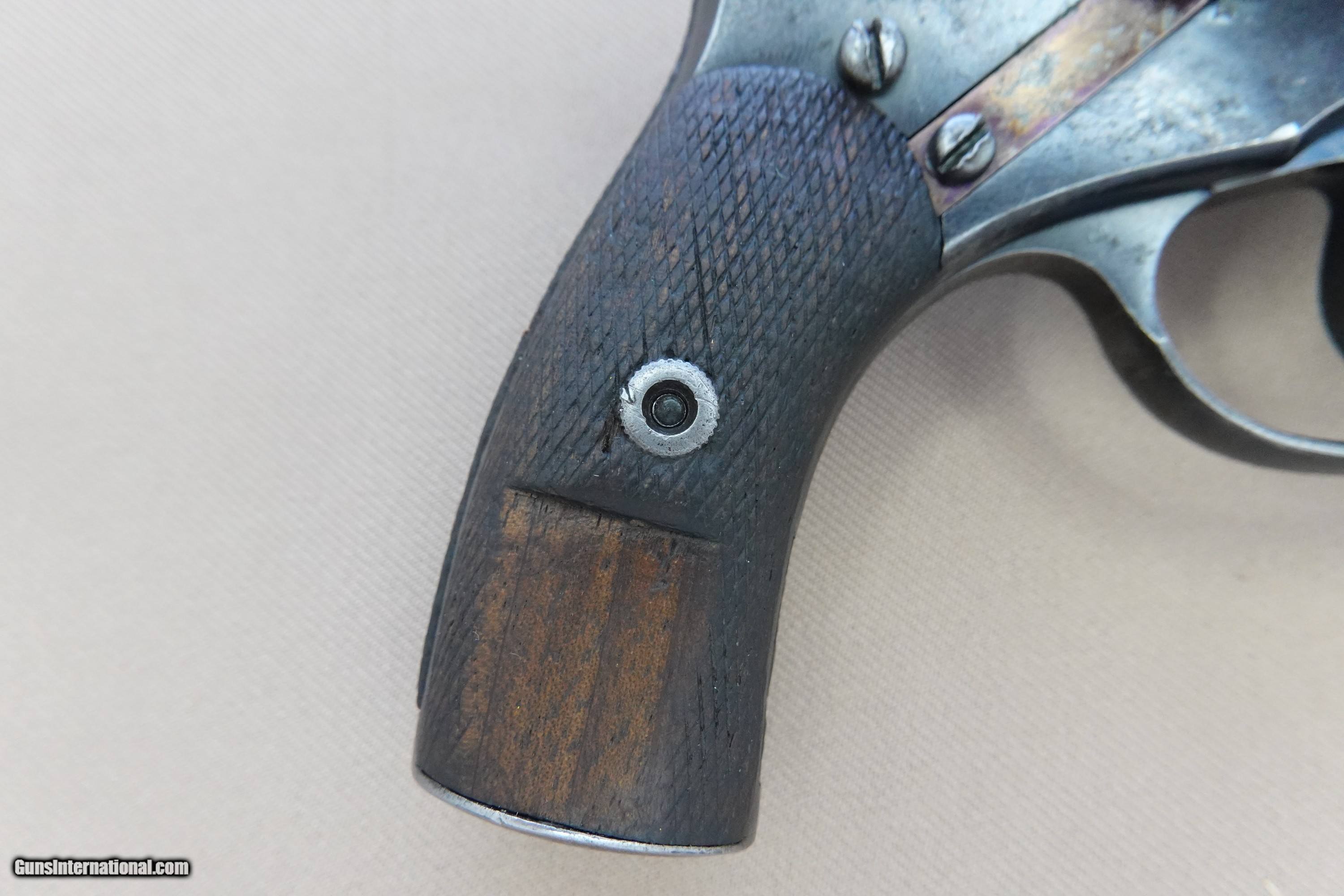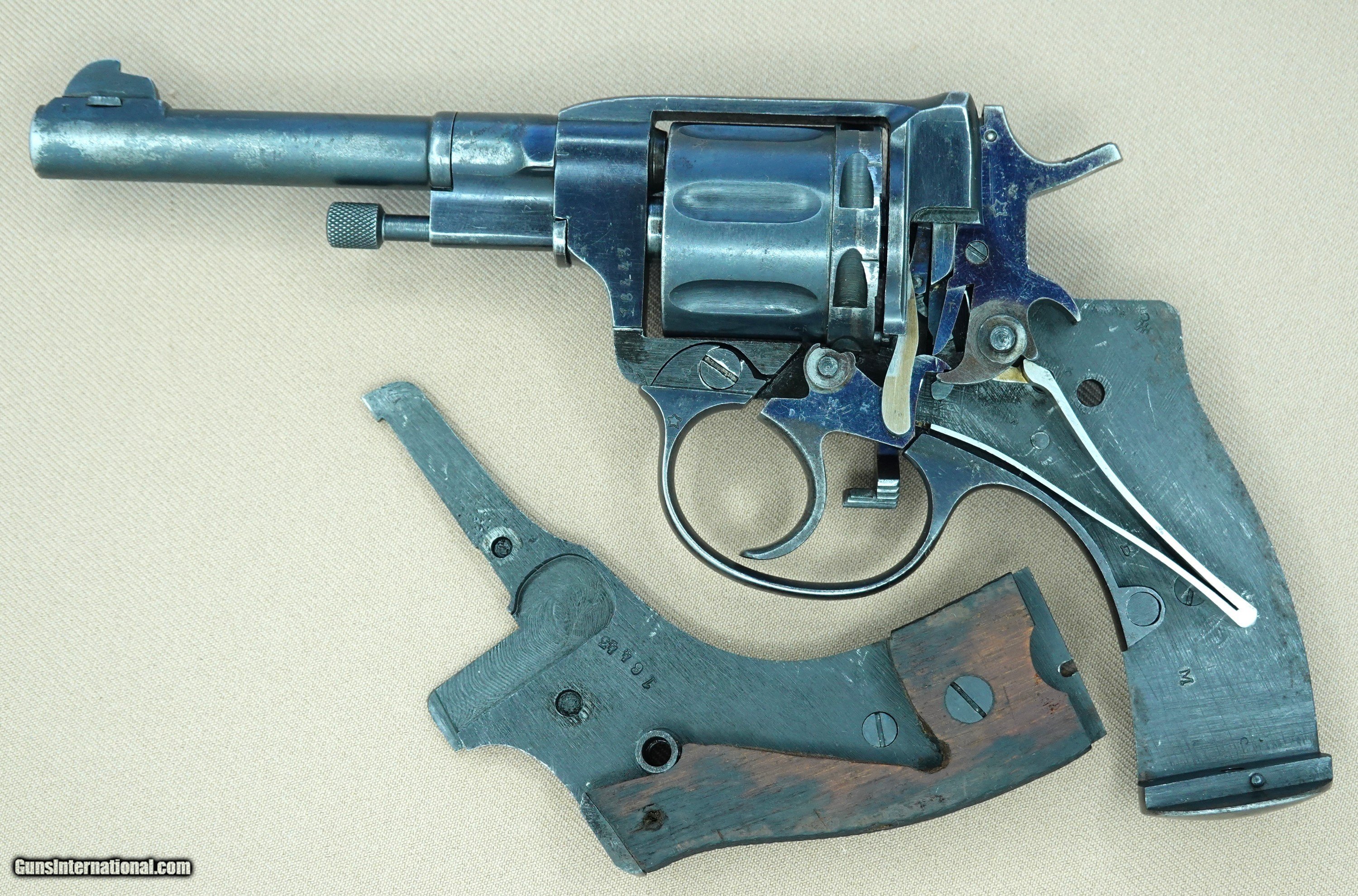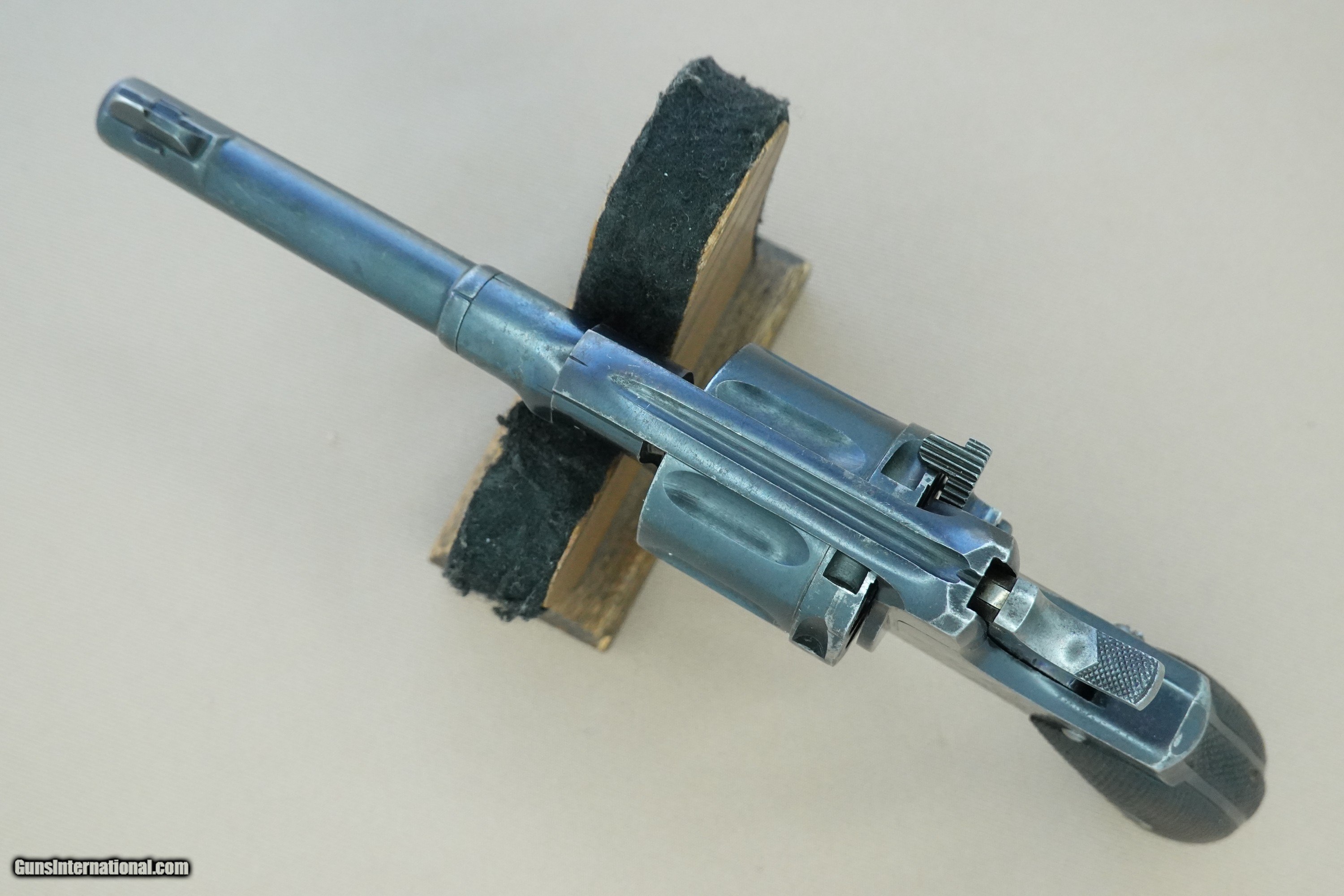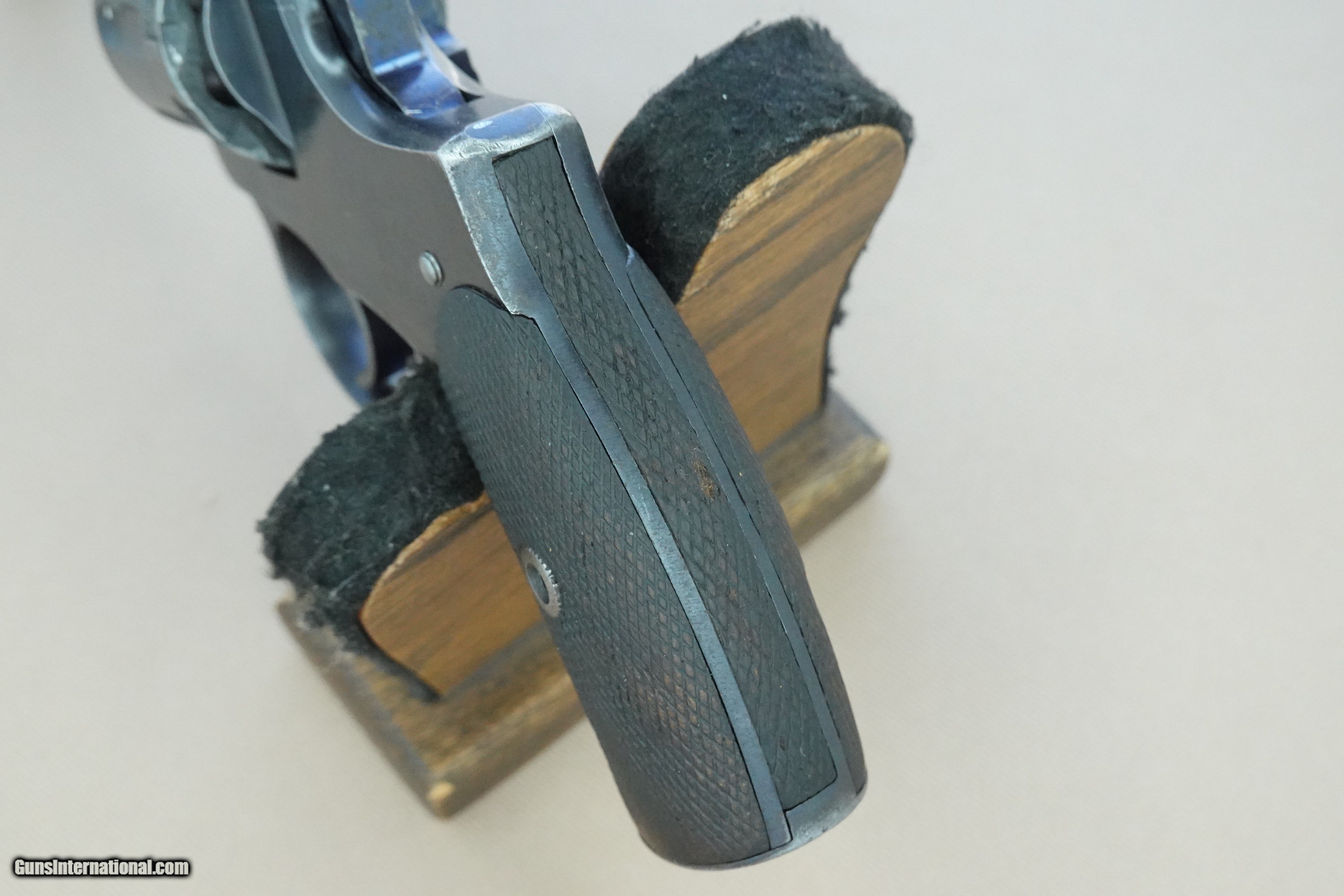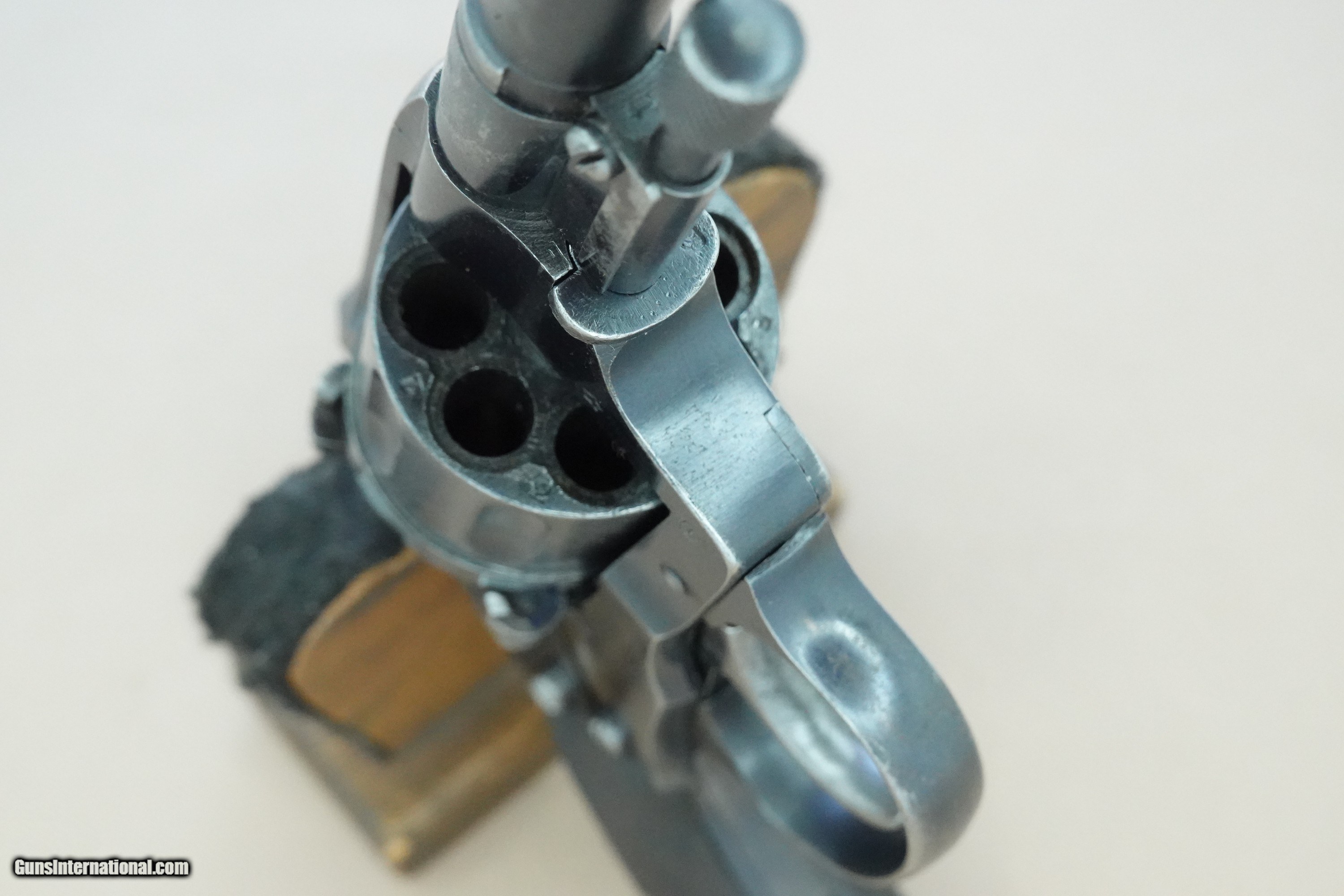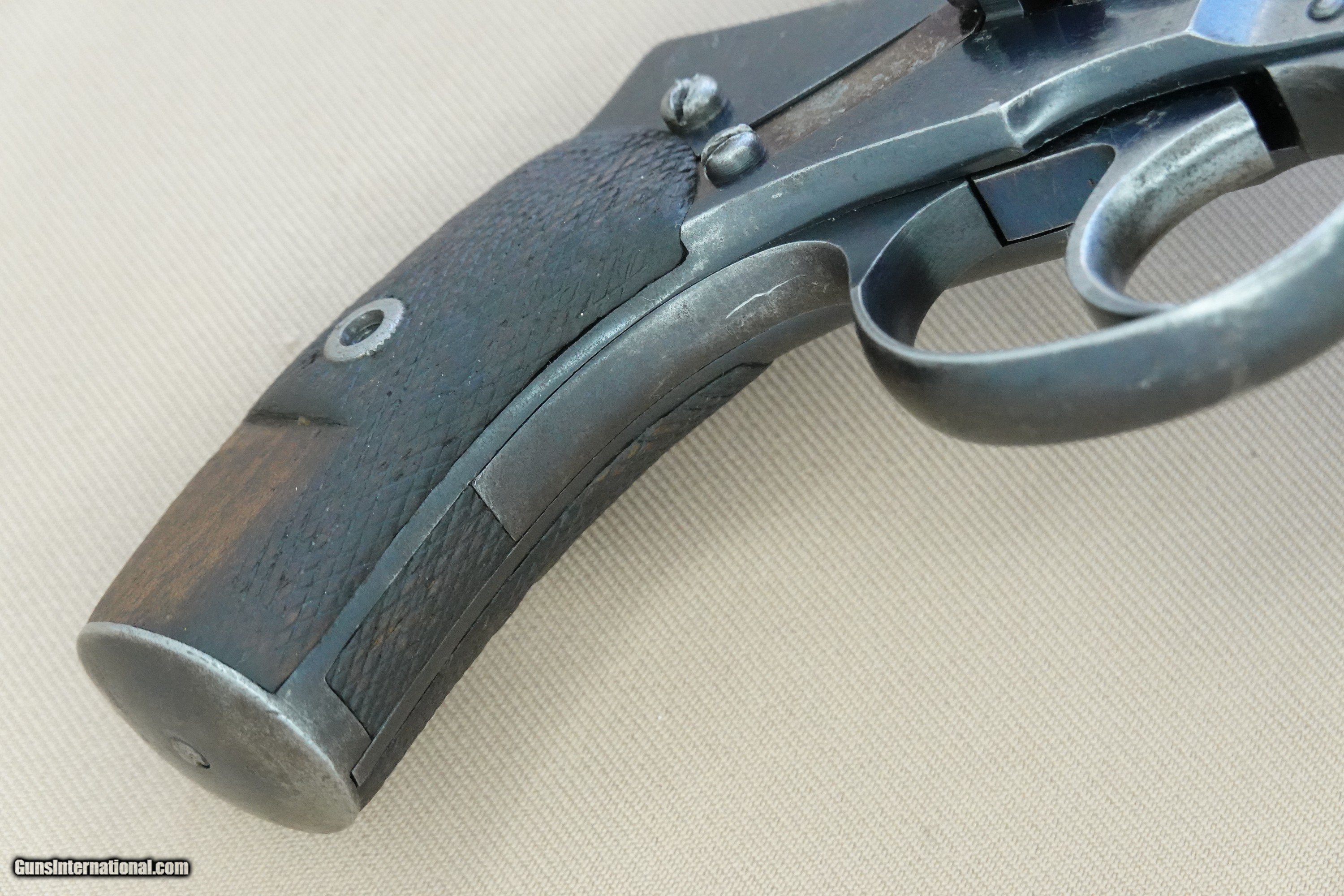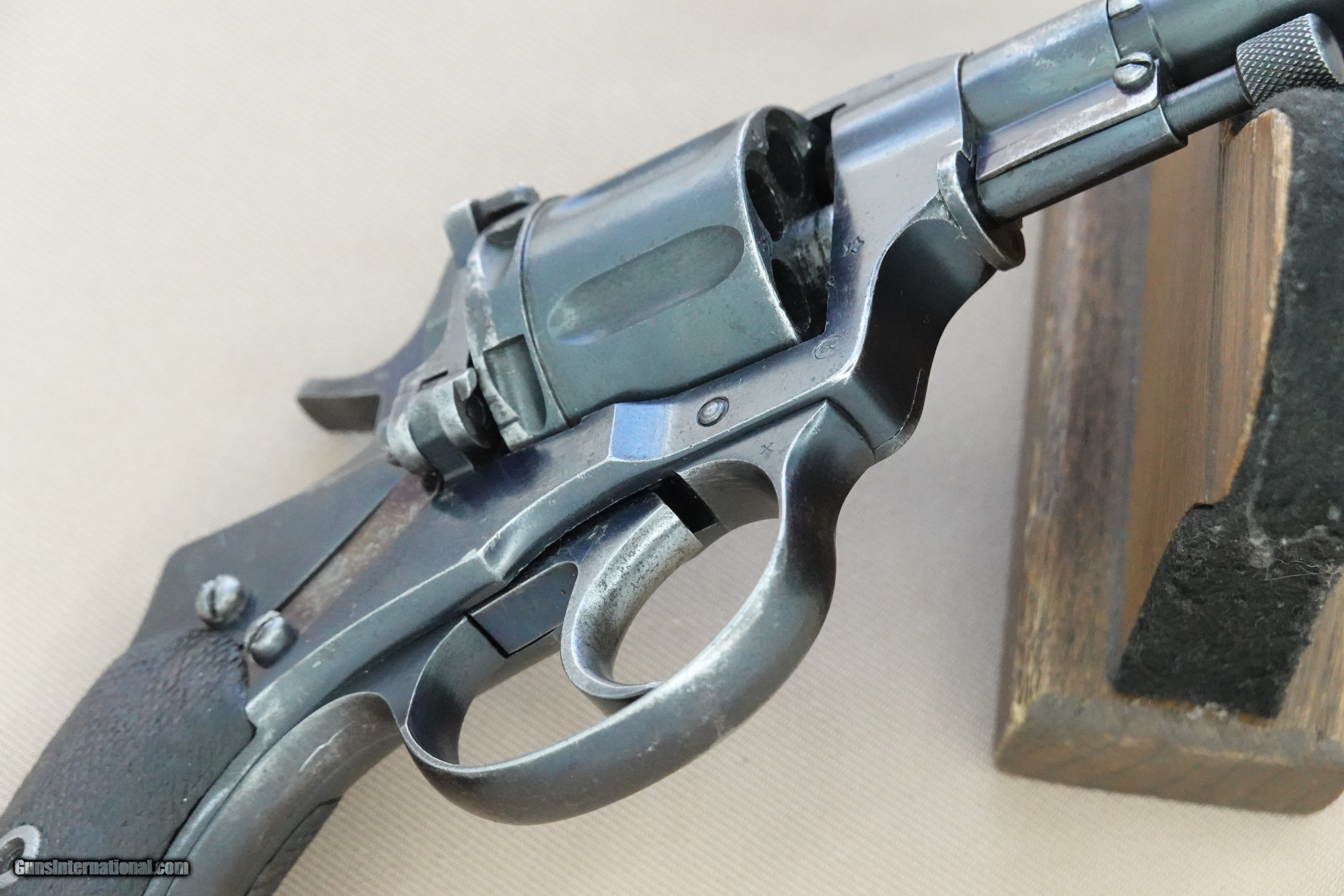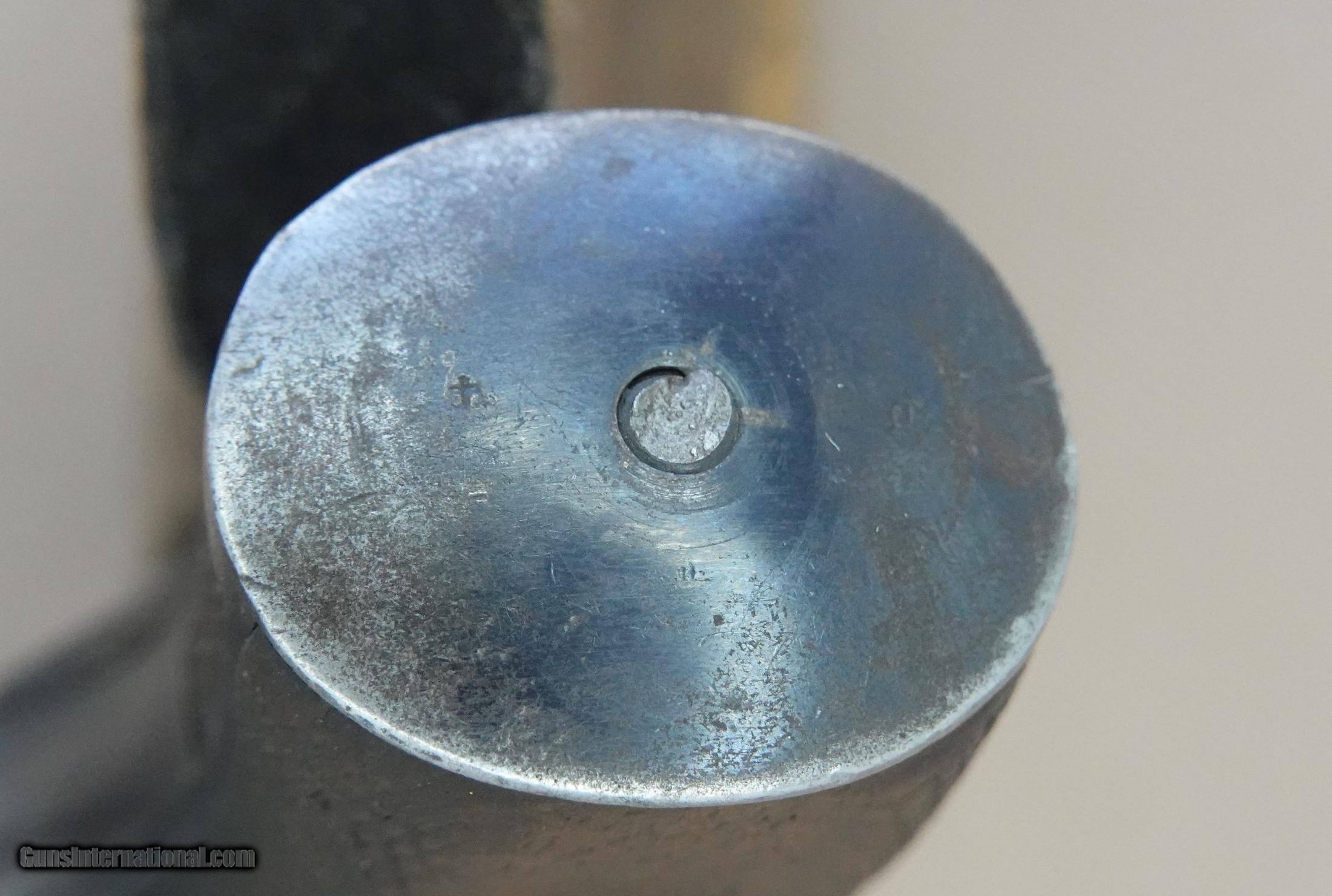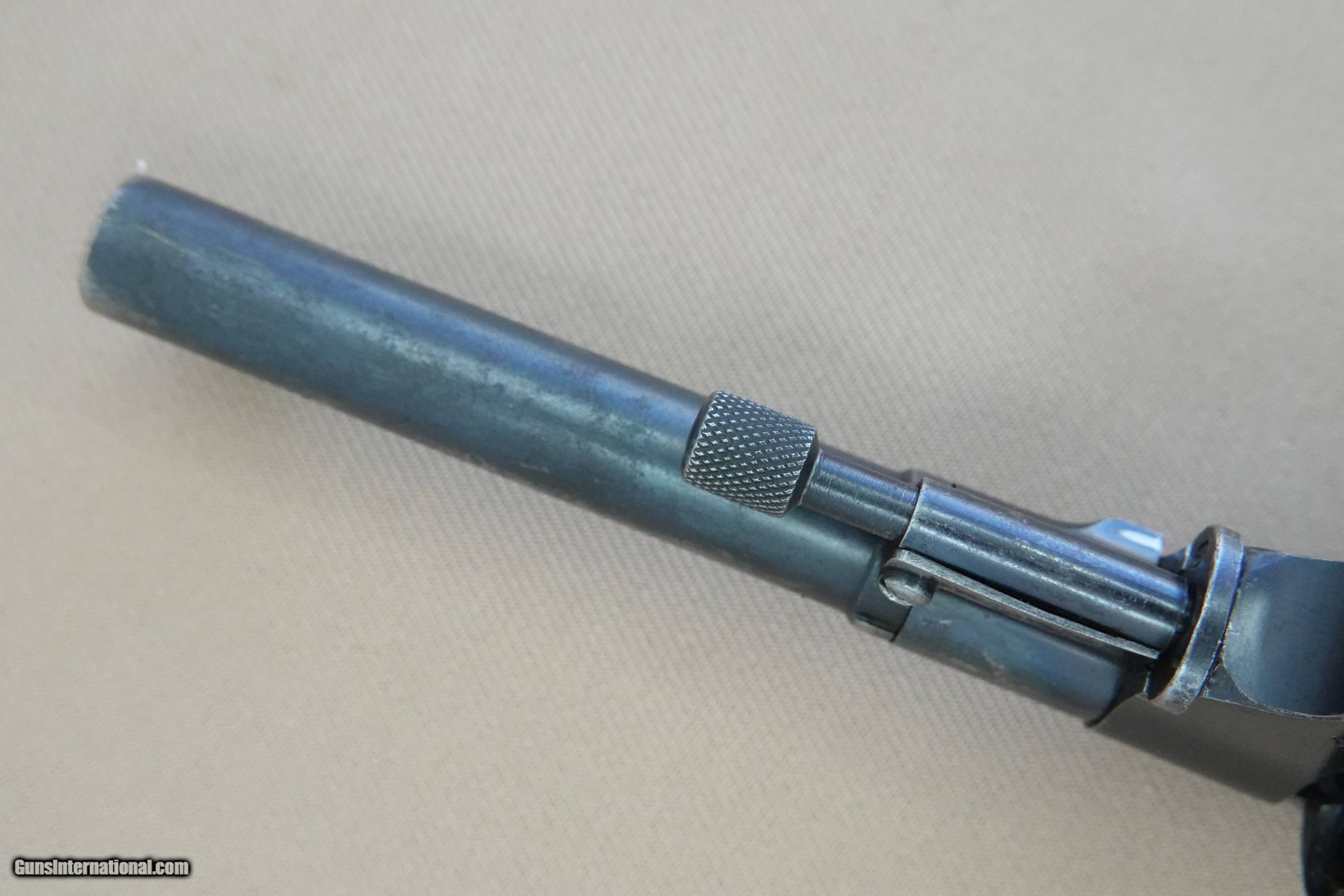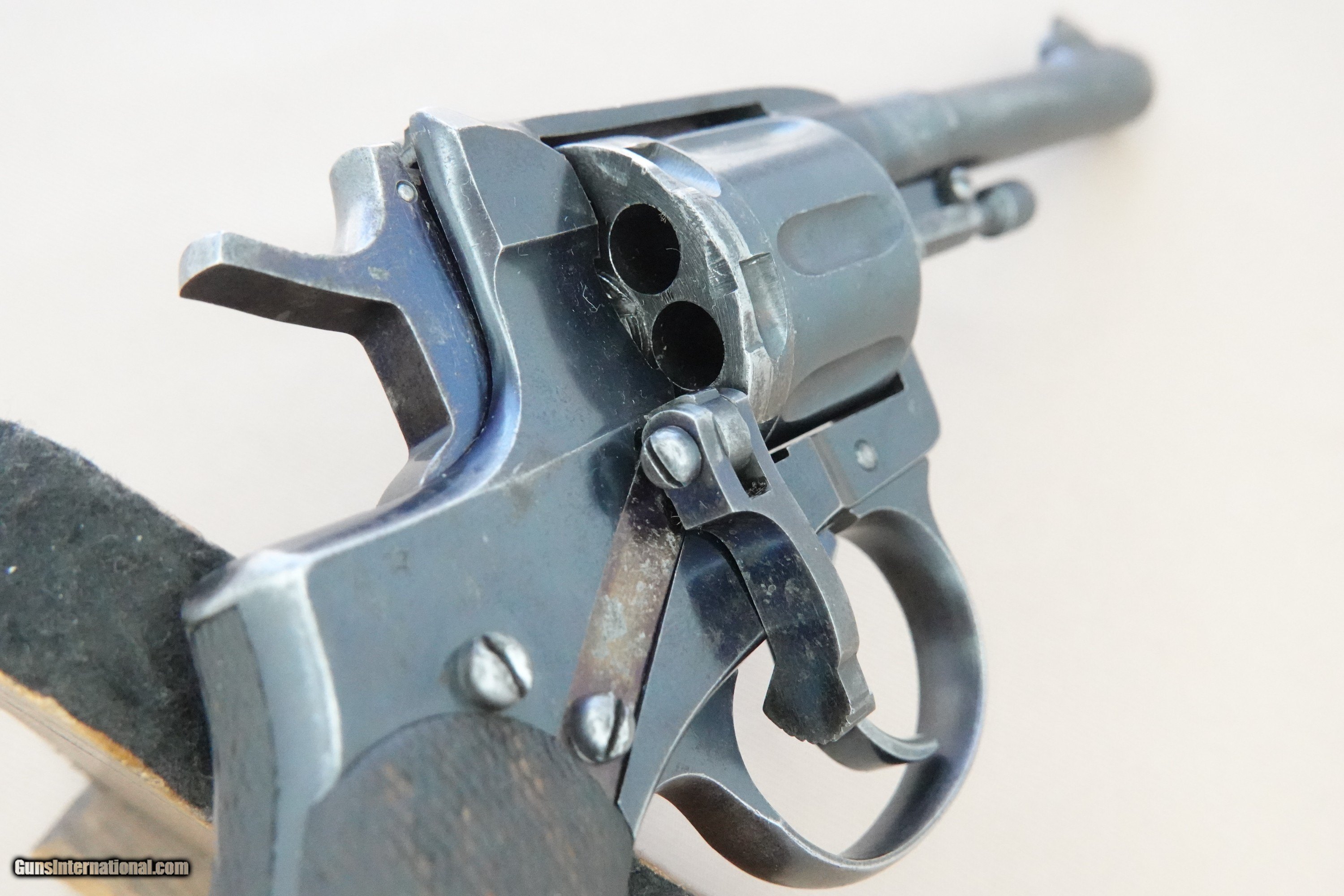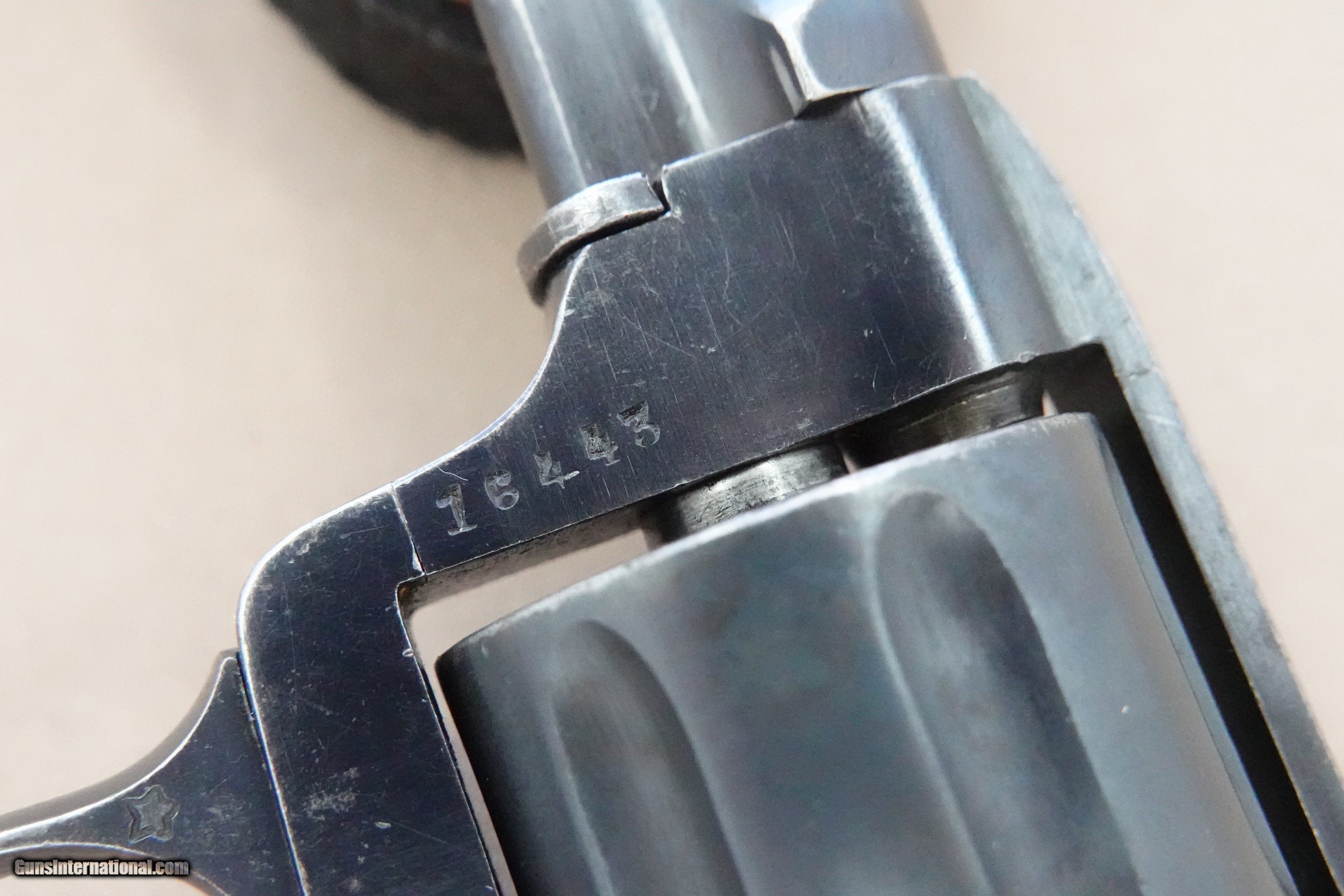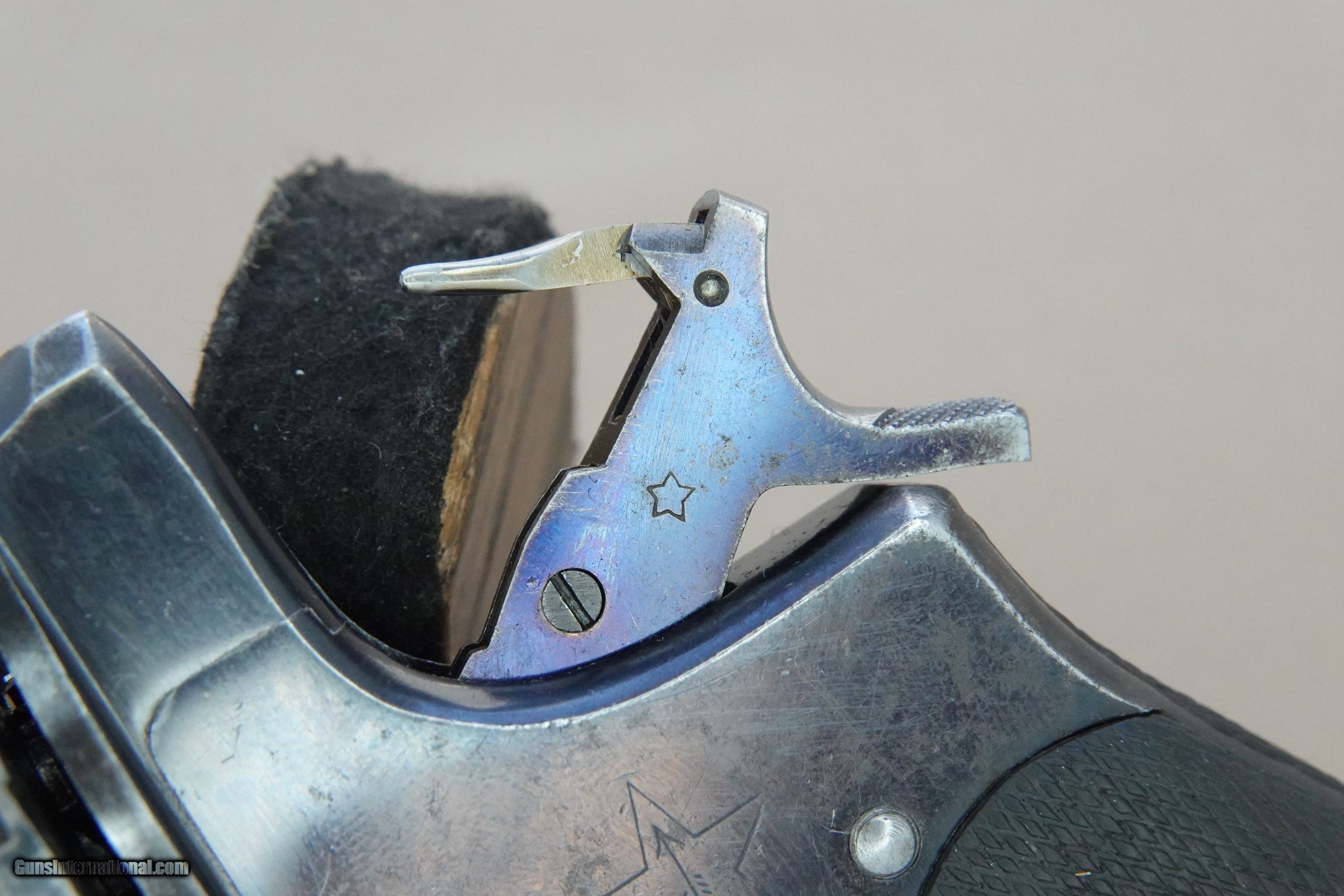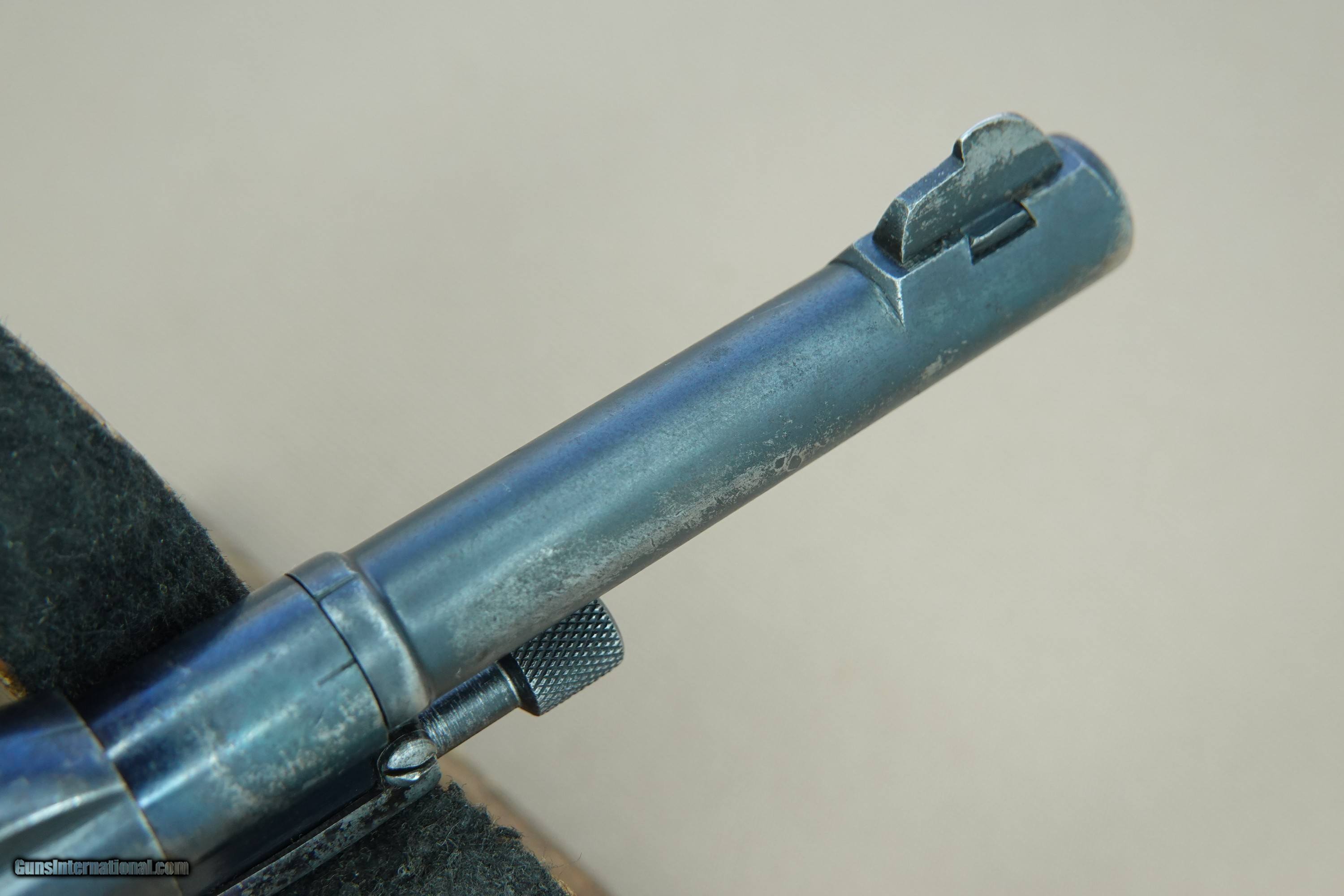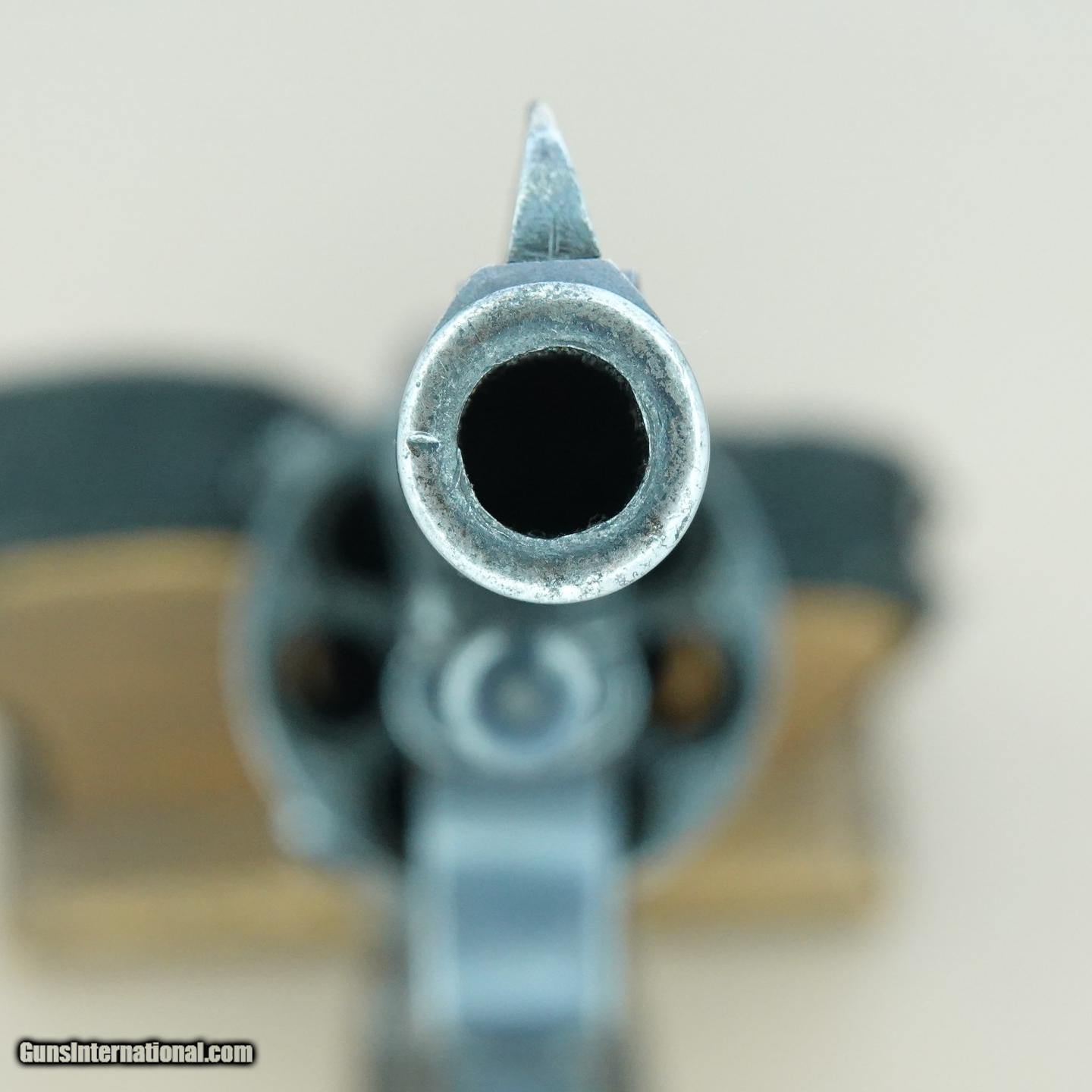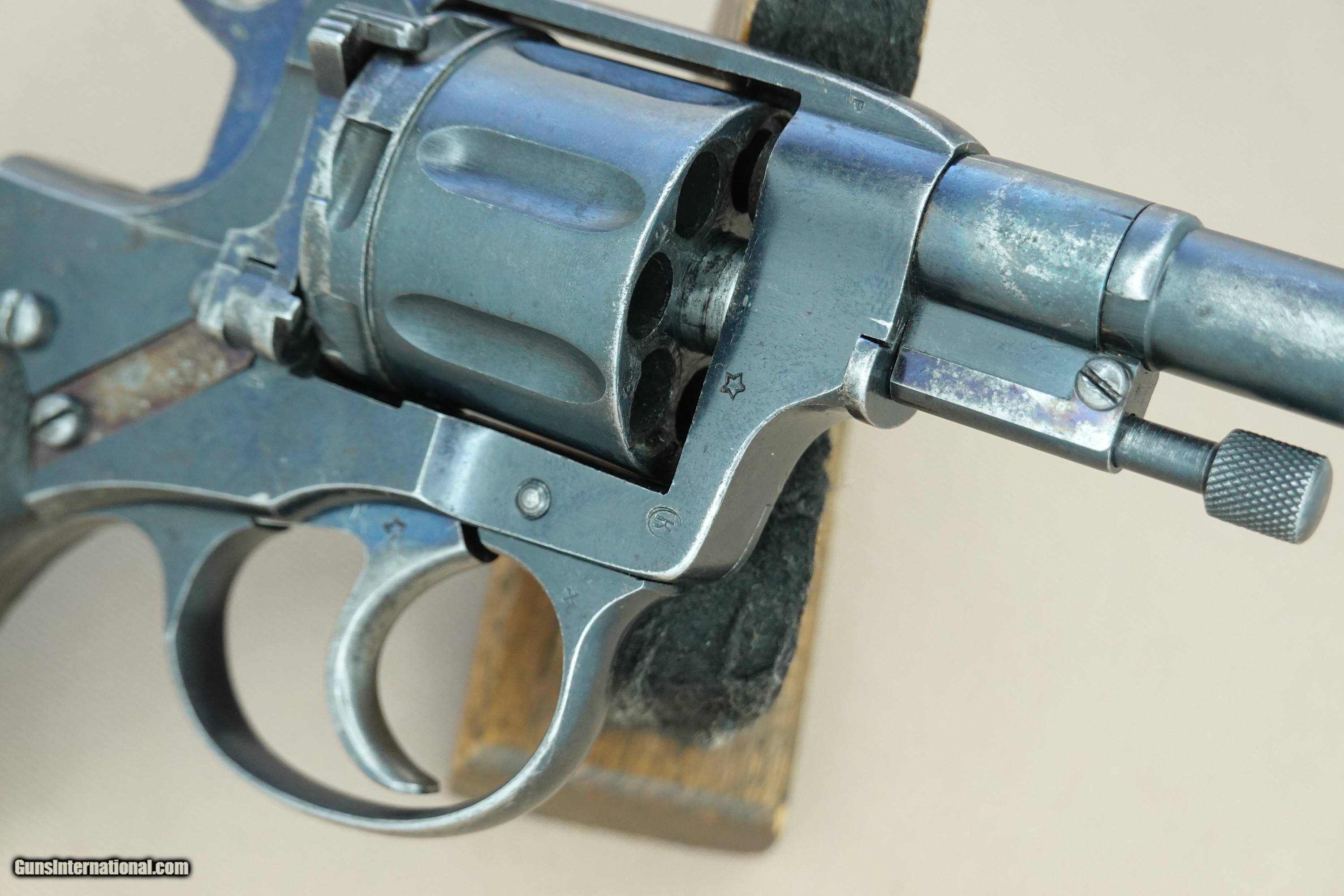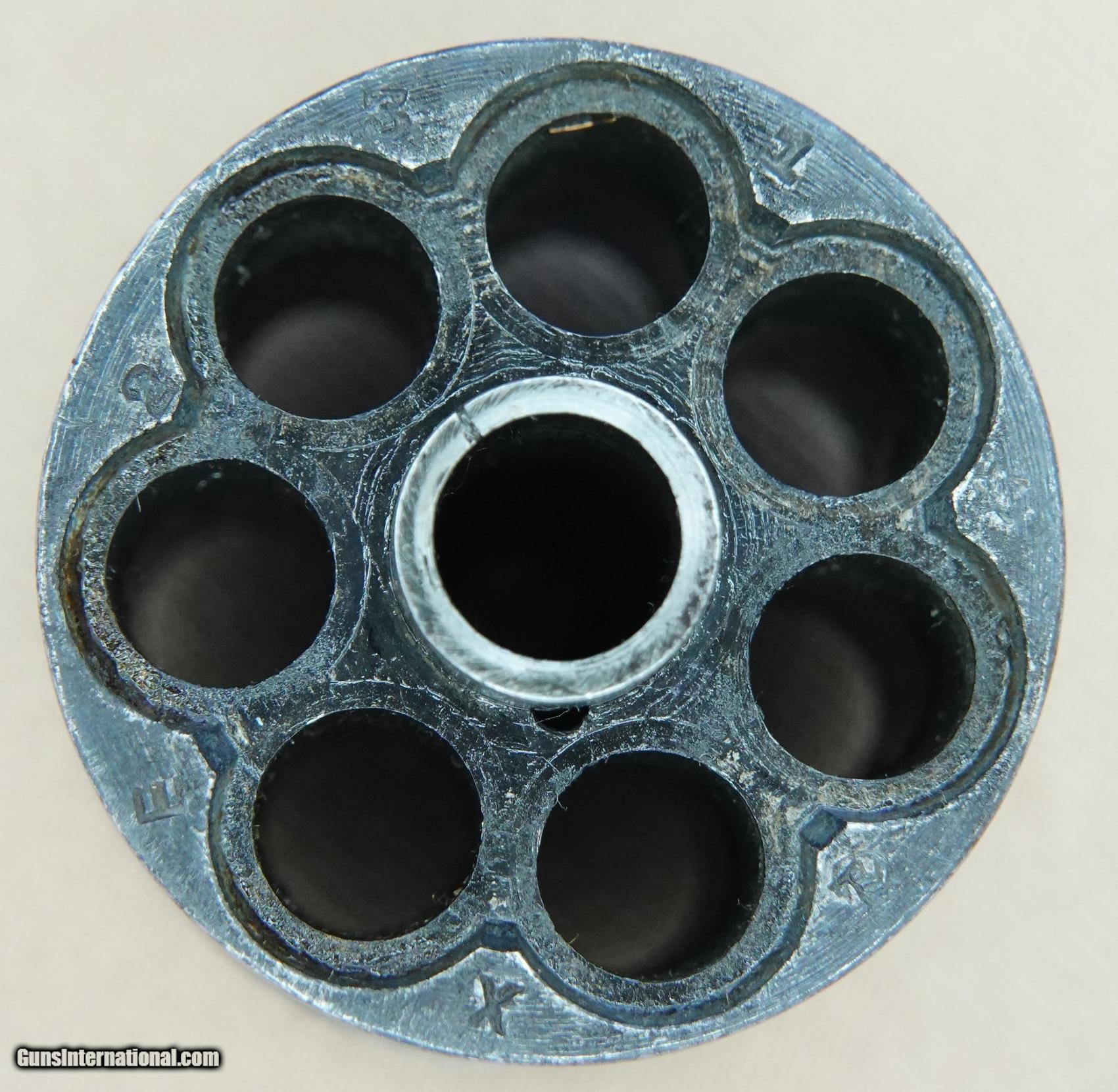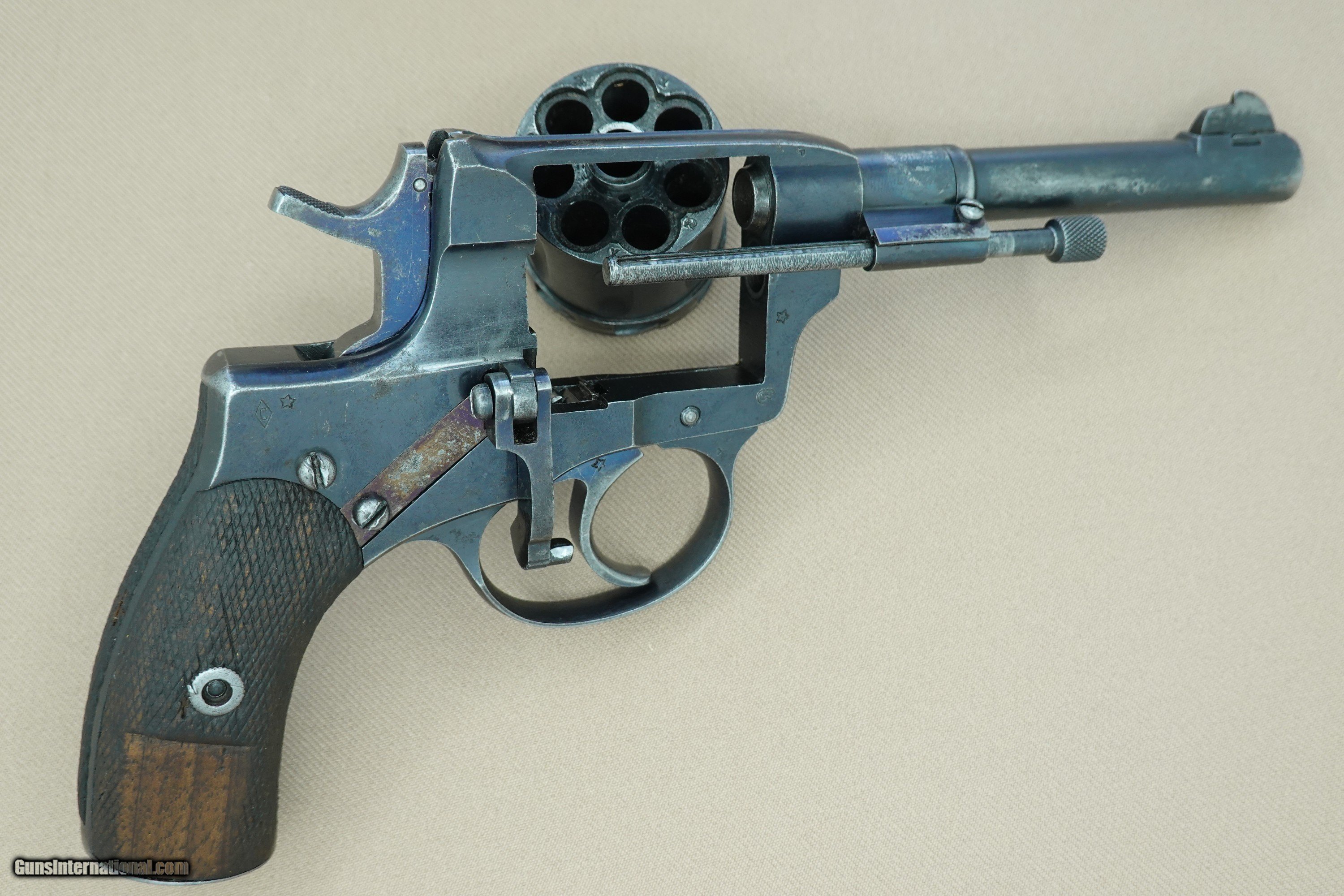Your Session is Ending
 The server has not detected any activity for the last 3 hours.
For your security, your session will expire in 2 minutes and you will be redirected to the Sign In page.
Would you like to stay signed in?
The server has not detected any activity for the last 3 hours.
For your security, your session will expire in 2 minutes and you will be redirected to the Sign In page.
Would you like to stay signed in?
** SOLD ** 1929 Mfg. Russian Military Tula Arsenal M1895 Nagant Gas-Seal Revolver ** NON-IMPORT / NON-REBUILD Original Beauty!! **
** SOLD ** 1929 Mfg. Russian Military Tula Arsenal M1895 Nagant Gas-Seal Revolver ** NON-IMPORT / NON-REBUILD Original Beauty!! **
Guns International #: 102567869
Seller's Inventory #: M23-730
Category - Military Revolvers - Non-US
- Nagant Revolvers
Seller's Information
When emailing or calling sellers direct,
please mention that you saw their listing on GunsInternational.com
Seller: Antique & Modern Firearms, Inc.
Company: Antique & Modern Firearms, Inc.
Company: Antique & Modern Firearms, Inc.
Member Since: 4/27/15
State:
Kentucky
Zip: 40503
Country: United States
Phone:
(859) 276-1419
Fax:
(859) 278-0838
Platinum Seller
Active Listings: 119
Total Listings: 15984
Seller Type: FFL Dealer
Return Policy: 3 day inspection and return policy on used guns and accessories.
Payment Methods: Visa,Master Card, Discover,Check
** SOLD ** 1929 Mfg. Russian Military Tula Arsenal M1895 Nagant Gas-Seal Revolver
** NON-IMPORT / NON-REBUILD Original Beauty!! **
Description:
This is a very cool, non-import marked, non-arsenal reworked, original 1929-production Russian Military-issued Model 1895 Nagant Revolver made by the Tula Arsenal. This 1929-production M1895 Nagant is what they were originally designed to look like, with a MUCH higher degree of fit and finish, beautiful finishes, and an exceptional amount of attention to detail than the later production guns. This was made before the pressures and economies of war forced the Russians to use lower quality materials and lessor-skilled workers to build them, and well before they had to take shortcuts in every aspect of production to make them cheaper and faster. Comparing this Nagant to one made in 1943, it is so different it could be mistaken for a completely different model. This very unique SA/DA gas-seal type Russian revolver is all-original and matching except for the cylinder, which is a factory-made and period-correct part, but numbered to a different gun. With that said, the cylinder works perfectly and is "in time" in this revolver, and it looks like it has been in this gun for a very long time, likely well before being brought or shipped to the States. Given the type and color of blue finish on the cylinder, which perfectly matches the rest of the gun, along with the uniform and matching degree of wear it shows, it was likely replaced in the 1930's or 1940's during WW2 at the very latest. While this M1895 Nagant revolver was most likely brought to the States as a war trophy or bring-back from WW2, it is very likely that this Nagant saw action in numerous conflicts before WW2 even started. From the time this gun was made in 1929 until the German invasion in 1941, this gun could have been used in the following conflicts: The Sino-Soviet Conflict of 1929, the Red Army Interventions in Afghanistan in both 1929 and 1930, the Chechen Uprising of 1932, the Soviet-Japanese Border Conflict from 1932-1941, the Soviet Invasion of Xinjiang in 1934, the Islamic Rebellion in Xinjiang of 1937, The Soviet Invasion Of Poland in 1939, The Winter War / Invasion of Finland in 1939-1940, and the Occupation of the Baltic States in 1940. As you can see, this revolver could have been used in as many as 10 major conflicts including WW2!!!
The M1895 Nagant revolver is a very interesting handgun in that it has a very unique action for a revolver. Unlike virtually every other revolver being used at that time in any part of the world, or any time since, the cylinder does not just spin but rather spins AND moves forward and back as part of it's action. The design was termed a gas-seal action, designed to form a tight seal between the barrel and the cylinder, which greatly reduces the amount of velocity lost at the gap between the forcing cone and cylinder. That tight seal also eliminates virtually all of the location-identifying fire/flash that escapes between the cylinder and barrel that you normally see with a revolver, and it improves the accuracy potential of the revolver by eliminating much of the jump the bullet has to make from the chamber to the rifling in the barrel. This gas-seal action was accomplished in two parts, the ammunition used and the movement of the cylinder during firing. The M1895 Nagant used a specifically-designed 7.62x38mmR (rimmed) full-length brass cartridge in which the bullet was seated fully within the brass, leaving the top edge of the cartridge accessible. The second part was the action of the cylinder itself, whereupon during the action cycle the chamber in the cylinder that is about to be fired first rotates into position in-line with the barrels bore, then it is pushed forward by a moving breech-face with a hollow center that contacts and supports the rear of the cartridge that is about to be fired. This causes the chamber and the top rim portion of the cartridge to be wedged onto the tapered forcing cone, creating a tight seal between the cylinder and barrel by using the brass as essentiality a soft gasket between the 2 steel parts. Once it has moved forward and created the seal, the hammer drops and the very long and somewhat silly-looking hammer-mounted firing pin travels thru the hollow-center of the extended breech-face and hits the primer to set off the cartridge. Once the trigger is released, a spring-loaded bushing in the cylinder returns the cylinder back to it's rearward-most position and is ready to cycle again. Another very neat feature of the Nagant revolver is how it comes apart. It was designed to be easily accessible for troops to clean and maintain it, as well as easy to repair and/or replace any broken parts in the action itself. A small screw with a wide slot in it was placed on the right side of the revolver that could be opened or closed with the rim of the cartridges it takes. Once that screw was removed, most of the left side comes off in one piece to expose the internals. All of the internals were designed to stay in place unless purposely removed, nothing will just fall out of it unless they are badly broken. The ejector rod on this revolver is a great design and serves several purposes. It is mounted in a tab that is part of a sleeve that rotates around the barrel, and that same extended tab also secures the tube-like cylinder pin in the frame. In the stowed position the ejector rod runs thru the center of the cylinder pin and locks in place with a clock-wise turn. To use the ejector rod or remove the cylinder, the ejector rod is screwed-out one turn and then pulled outward, and once at the end of the outward travel, the sleeve that it rides in can be swung out to the right, in-line with the chambers of the cylinder and the loading gate, which flips down. At that point the cylinder can be turn and the ejector rod used to push out the cartridges one at a time. When the sleeve and ejector rod is swung out to the right, and the loading gate is flipped downward, the lipped cylinder pin is accessible to be pulled out, allowing the cylinder to be removed from the right side. It is a very secure, fast and easy design. The M1895 Nagant revolver is definitely a very neat and impressive design, although in-practice the gas-seal portion of the gun was over-engineered for what benefits it gave the revolver when used as a combat pistol.
As you can see from the pictures, this particular example is very handsome and has a lot of nice original finish intact both inside and out. Various parts are finished in a high-gloss blue, a polished fire-blue, and there is even some strawed small parts on the inside. All of the wear and handling marks are minor, and there are no eyesores or bad spots in the metal. All of the factory and military markings are still intact and 100% legible, as are the numerous inspection stamps all over the gun. As mentioned before, all of the serial numbered parts match except for the cylinder, and all of the screws and small parts appear to be totally original. The bore in this Nagant is in good condition overall, showing rifling throughout with nicely-defined edges and clean lands, and only some extremely small and shallow spots of pitting in the grooves. The cylinder chambers are clean and clear. The original grips on this revolver are still intact and are of the fine checkered variety. They are all free from cracks or repairs, however the right grip has had a flat carved into it, for what purpose we dont know. It might have been done in order to carve someone's initials in it? All of the grip parts are nice and tight to the gun and there is no wiggle in any of them. The action on this Nagant works perfectly, is "in time", and it locks-up nicely. All of the controls on it are in perfect working order. There is no doubt that this 1929 -mfg. Nagant will still work just as well today as it did over 90 years ago when it left the factory.
If you have been looking for a really special example of the M1895 Nagant for your collection that has NOT been refinished, arsenal rebuilt one or more times, heavily worn and abused, and/or import-marked with big ugly letters like 98% of them you see, this is it!! We have had countless M1895 Nagant revolvers over the years, but only a few (including this one!) that were like this. This is what the 1895 Nagant was really meant to be and look-like, and should be an excellent long-term investment due to the extreme scarcity of original, non-rebuilt and non-import-marked guns in the States. It would be VERY hard to improve upon this example in any respect.
SOLD
Curio/Relic: Yes
Handgun Caliber: 7.62x38mmR (7.62x38mm Nagant)
Manufacturer: Tula Arsenal, Russia
Model: Model 1895 Nagant Revolver
Serial Number: 16443
Barrel Length: 4.5" Inches
Chambers: 7 Chambers Counter-Bored on Face to Seal to Barrel
Condition: Good
Metal Condition: Good
Wood Condition: Average
Bore Condition: Above Average / Good
Barrel Type: Round
Action: Double-Action / Single-Action "Gas-Seal" Revolver
Finish: Gloss Blue / Fire-Blue
Sights: Fixed Iron Sights
Manufacture Date: 1929
Description:
This is a very cool, non-import marked, non-arsenal reworked, original 1929-production Russian Military-issued Model 1895 Nagant Revolver made by the Tula Arsenal. This 1929-production M1895 Nagant is what they were originally designed to look like, with a MUCH higher degree of fit and finish, beautiful finishes, and an exceptional amount of attention to detail than the later production guns. This was made before the pressures and economies of war forced the Russians to use lower quality materials and lessor-skilled workers to build them, and well before they had to take shortcuts in every aspect of production to make them cheaper and faster. Comparing this Nagant to one made in 1943, it is so different it could be mistaken for a completely different model. This very unique SA/DA gas-seal type Russian revolver is all-original and matching except for the cylinder, which is a factory-made and period-correct part, but numbered to a different gun. With that said, the cylinder works perfectly and is "in time" in this revolver, and it looks like it has been in this gun for a very long time, likely well before being brought or shipped to the States. Given the type and color of blue finish on the cylinder, which perfectly matches the rest of the gun, along with the uniform and matching degree of wear it shows, it was likely replaced in the 1930's or 1940's during WW2 at the very latest. While this M1895 Nagant revolver was most likely brought to the States as a war trophy or bring-back from WW2, it is very likely that this Nagant saw action in numerous conflicts before WW2 even started. From the time this gun was made in 1929 until the German invasion in 1941, this gun could have been used in the following conflicts: The Sino-Soviet Conflict of 1929, the Red Army Interventions in Afghanistan in both 1929 and 1930, the Chechen Uprising of 1932, the Soviet-Japanese Border Conflict from 1932-1941, the Soviet Invasion of Xinjiang in 1934, the Islamic Rebellion in Xinjiang of 1937, The Soviet Invasion Of Poland in 1939, The Winter War / Invasion of Finland in 1939-1940, and the Occupation of the Baltic States in 1940. As you can see, this revolver could have been used in as many as 10 major conflicts including WW2!!!
The M1895 Nagant revolver is a very interesting handgun in that it has a very unique action for a revolver. Unlike virtually every other revolver being used at that time in any part of the world, or any time since, the cylinder does not just spin but rather spins AND moves forward and back as part of it's action. The design was termed a gas-seal action, designed to form a tight seal between the barrel and the cylinder, which greatly reduces the amount of velocity lost at the gap between the forcing cone and cylinder. That tight seal also eliminates virtually all of the location-identifying fire/flash that escapes between the cylinder and barrel that you normally see with a revolver, and it improves the accuracy potential of the revolver by eliminating much of the jump the bullet has to make from the chamber to the rifling in the barrel. This gas-seal action was accomplished in two parts, the ammunition used and the movement of the cylinder during firing. The M1895 Nagant used a specifically-designed 7.62x38mmR (rimmed) full-length brass cartridge in which the bullet was seated fully within the brass, leaving the top edge of the cartridge accessible. The second part was the action of the cylinder itself, whereupon during the action cycle the chamber in the cylinder that is about to be fired first rotates into position in-line with the barrels bore, then it is pushed forward by a moving breech-face with a hollow center that contacts and supports the rear of the cartridge that is about to be fired. This causes the chamber and the top rim portion of the cartridge to be wedged onto the tapered forcing cone, creating a tight seal between the cylinder and barrel by using the brass as essentiality a soft gasket between the 2 steel parts. Once it has moved forward and created the seal, the hammer drops and the very long and somewhat silly-looking hammer-mounted firing pin travels thru the hollow-center of the extended breech-face and hits the primer to set off the cartridge. Once the trigger is released, a spring-loaded bushing in the cylinder returns the cylinder back to it's rearward-most position and is ready to cycle again. Another very neat feature of the Nagant revolver is how it comes apart. It was designed to be easily accessible for troops to clean and maintain it, as well as easy to repair and/or replace any broken parts in the action itself. A small screw with a wide slot in it was placed on the right side of the revolver that could be opened or closed with the rim of the cartridges it takes. Once that screw was removed, most of the left side comes off in one piece to expose the internals. All of the internals were designed to stay in place unless purposely removed, nothing will just fall out of it unless they are badly broken. The ejector rod on this revolver is a great design and serves several purposes. It is mounted in a tab that is part of a sleeve that rotates around the barrel, and that same extended tab also secures the tube-like cylinder pin in the frame. In the stowed position the ejector rod runs thru the center of the cylinder pin and locks in place with a clock-wise turn. To use the ejector rod or remove the cylinder, the ejector rod is screwed-out one turn and then pulled outward, and once at the end of the outward travel, the sleeve that it rides in can be swung out to the right, in-line with the chambers of the cylinder and the loading gate, which flips down. At that point the cylinder can be turn and the ejector rod used to push out the cartridges one at a time. When the sleeve and ejector rod is swung out to the right, and the loading gate is flipped downward, the lipped cylinder pin is accessible to be pulled out, allowing the cylinder to be removed from the right side. It is a very secure, fast and easy design. The M1895 Nagant revolver is definitely a very neat and impressive design, although in-practice the gas-seal portion of the gun was over-engineered for what benefits it gave the revolver when used as a combat pistol.
As you can see from the pictures, this particular example is very handsome and has a lot of nice original finish intact both inside and out. Various parts are finished in a high-gloss blue, a polished fire-blue, and there is even some strawed small parts on the inside. All of the wear and handling marks are minor, and there are no eyesores or bad spots in the metal. All of the factory and military markings are still intact and 100% legible, as are the numerous inspection stamps all over the gun. As mentioned before, all of the serial numbered parts match except for the cylinder, and all of the screws and small parts appear to be totally original. The bore in this Nagant is in good condition overall, showing rifling throughout with nicely-defined edges and clean lands, and only some extremely small and shallow spots of pitting in the grooves. The cylinder chambers are clean and clear. The original grips on this revolver are still intact and are of the fine checkered variety. They are all free from cracks or repairs, however the right grip has had a flat carved into it, for what purpose we dont know. It might have been done in order to carve someone's initials in it? All of the grip parts are nice and tight to the gun and there is no wiggle in any of them. The action on this Nagant works perfectly, is "in time", and it locks-up nicely. All of the controls on it are in perfect working order. There is no doubt that this 1929 -mfg. Nagant will still work just as well today as it did over 90 years ago when it left the factory.
If you have been looking for a really special example of the M1895 Nagant for your collection that has NOT been refinished, arsenal rebuilt one or more times, heavily worn and abused, and/or import-marked with big ugly letters like 98% of them you see, this is it!! We have had countless M1895 Nagant revolvers over the years, but only a few (including this one!) that were like this. This is what the 1895 Nagant was really meant to be and look-like, and should be an excellent long-term investment due to the extreme scarcity of original, non-rebuilt and non-import-marked guns in the States. It would be VERY hard to improve upon this example in any respect.
SOLD
Curio/Relic: Yes
Handgun Caliber: 7.62x38mmR (7.62x38mm Nagant)
Manufacturer: Tula Arsenal, Russia
Model: Model 1895 Nagant Revolver
Serial Number: 16443
Barrel Length: 4.5" Inches
Chambers: 7 Chambers Counter-Bored on Face to Seal to Barrel
Condition: Good
Metal Condition: Good
Wood Condition: Average
Bore Condition: Above Average / Good
Barrel Type: Round
Action: Double-Action / Single-Action "Gas-Seal" Revolver
Finish: Gloss Blue / Fire-Blue
Sights: Fixed Iron Sights
Manufacture Date: 1929
Click Photo to Enlarge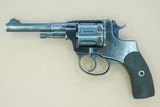
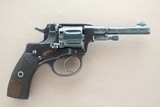

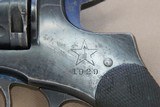
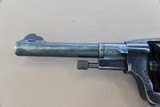
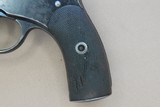
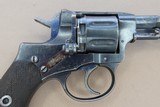
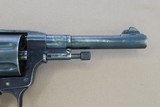
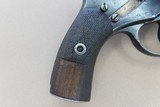

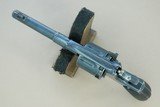
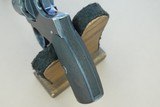
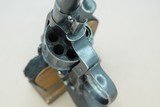
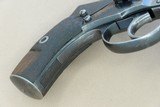
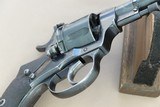
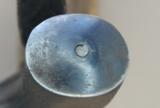
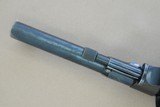

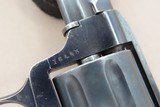

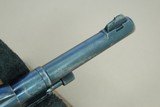

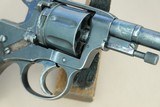
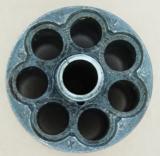
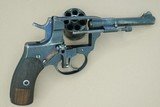
|
Guns International #: 102567869
Category - Military Revolvers - Non-US
- Nagant Revolvers
Seller's Information
When emailing or calling sellers direct,
please mention that you saw their listing on GunsInternational.com
Seller: Antique & Modern Firearms, Inc.
Company: Antique & Modern Firearms, Inc. Member Since: 4/27/15
State:
Kentucky
Zip: 40503
Country: United States
Phone:
(859) 276-1419
Fax:
(859) 278-0838
Platinum Seller
Active Listings: 119
Total Listings: 15984
Seller Type: FFL Dealer
Return Policy: 3 day inspection and return policy on used guns and accessories.
Payment Methods: Visa,Master Card, Discover,Check
** SOLD ** 1929 Mfg. Russian Military Tula Arsenal M1895 Nagant Gas-Seal Revolver
** NON-IMPORT / NON-REBUILD Original Beauty!! **
Description: This is a very cool, non-import marked, non-arsenal reworked, original 1929-production Russian Military-issued Model 1895 Nagant Revolver made by the Tula Arsenal. This 1929-production M1895 Nagant is what they were originally designed to look like, with a MUCH higher degree of fit and finish, beautiful finishes, and an exceptional amount of attention to detail than the later production guns. This was made before the pressures and economies of war forced the Russians to use lower quality materials and lessor-skilled workers to build them, and well before they had to take shortcuts in every aspect of production to make them cheaper and faster. Comparing this Nagant to one made in 1943, it is so different it could be mistaken for a completely different model. This very unique SA/DA gas-seal type Russian revolver is all-original and matching except for the cylinder, which is a factory-made and period-correct part, but numbered to a different gun. With that said, the cylinder works perfectly and is "in time" in this revolver, and it looks like it has been in this gun for a very long time, likely well before being brought or shipped to the States. Given the type and color of blue finish on the cylinder, which perfectly matches the rest of the gun, along with the uniform and matching degree of wear it shows, it was likely replaced in the 1930's or 1940's during WW2 at the very latest. While this M1895 Nagant revolver was most likely brought to the States as a war trophy or bring-back from WW2, it is very likely that this Nagant saw action in numerous conflicts before WW2 even started. From the time this gun was made in 1929 until the German invasion in 1941, this gun could have been used in the following conflicts: The Sino-Soviet Conflict of 1929, the Red Army Interventions in Afghanistan in both 1929 and 1930, the Chechen Uprising of 1932, the Soviet-Japanese Border Conflict from 1932-1941, the Soviet Invasion of Xinjiang in 1934, the Islamic Rebellion in Xinjiang of 1937, The Soviet Invasion Of Poland in 1939, The Winter War / Invasion of Finland in 1939-1940, and the Occupation of the Baltic States in 1940. As you can see, this revolver could have been used in as many as 10 major conflicts including WW2!!! The M1895 Nagant revolver is a very interesting handgun in that it has a very unique action for a revolver. Unlike virtually every other revolver being used at that time in any part of the world, or any time since, the cylinder does not just spin but rather spins AND moves forward and back as part of it's action. The design was termed a gas-seal action, designed to form a tight seal between the barrel and the cylinder, which greatly reduces the amount of velocity lost at the gap between the forcing cone and cylinder. That tight seal also eliminates virtually all of the location-identifying fire/flash that escapes between the cylinder and barrel that you normally see with a revolver, and it improves the accuracy potential of the revolver by eliminating much of the jump the bullet has to make from the chamber to the rifling in the barrel. This gas-seal action was accomplished in two parts, the ammunition used and the movement of the cylinder during firing. The M1895 Nagant used a specifically-designed 7.62x38mmR (rimmed) full-length brass cartridge in which the bullet was seated fully within the brass, leaving the top edge of the cartridge accessible. The second part was the action of the cylinder itself, whereupon during the action cycle the chamber in the cylinder that is about to be fired first rotates into position in-line with the barrels bore, then it is pushed forward by a moving breech-face with a hollow center that contacts and supports the rear of the cartridge that is about to be fired. This causes the chamber and the top rim portion of the cartridge to be wedged onto the tapered forcing cone, creating a tight seal between the cylinder and barrel by using the brass as essentiality a soft gasket between the 2 steel parts. Once it has moved forward and created the seal, the hammer drops and the very long and somewhat silly-looking hammer-mounted firing pin travels thru the hollow-center of the extended breech-face and hits the primer to set off the cartridge. Once the trigger is released, a spring-loaded bushing in the cylinder returns the cylinder back to it's rearward-most position and is ready to cycle again. Another very neat feature of the Nagant revolver is how it comes apart. It was designed to be easily accessible for troops to clean and maintain it, as well as easy to repair and/or replace any broken parts in the action itself. A small screw with a wide slot in it was placed on the right side of the revolver that could be opened or closed with the rim of the cartridges it takes. Once that screw was removed, most of the left side comes off in one piece to expose the internals. All of the internals were designed to stay in place unless purposely removed, nothing will just fall out of it unless they are badly broken. The ejector rod on this revolver is a great design and serves several purposes. It is mounted in a tab that is part of a sleeve that rotates around the barrel, and that same extended tab also secures the tube-like cylinder pin in the frame. In the stowed position the ejector rod runs thru the center of the cylinder pin and locks in place with a clock-wise turn. To use the ejector rod or remove the cylinder, the ejector rod is screwed-out one turn and then pulled outward, and once at the end of the outward travel, the sleeve that it rides in can be swung out to the right, in-line with the chambers of the cylinder and the loading gate, which flips down. At that point the cylinder can be turn and the ejector rod used to push out the cartridges one at a time. When the sleeve and ejector rod is swung out to the right, and the loading gate is flipped downward, the lipped cylinder pin is accessible to be pulled out, allowing the cylinder to be removed from the right side. It is a very secure, fast and easy design. The M1895 Nagant revolver is definitely a very neat and impressive design, although in-practice the gas-seal portion of the gun was over-engineered for what benefits it gave the revolver when used as a combat pistol. As you can see from the pictures, this particular example is very handsome and has a lot of nice original finish intact both inside and out. Various parts are finished in a high-gloss blue, a polished fire-blue, and there is even some strawed small parts on the inside. All of the wear and handling marks are minor, and there are no eyesores or bad spots in the metal. All of the factory and military markings are still intact and 100% legible, as are the numerous inspection stamps all over the gun. As mentioned before, all of the serial numbered parts match except for the cylinder, and all of the screws and small parts appear to be totally original. The bore in this Nagant is in good condition overall, showing rifling throughout with nicely-defined edges and clean lands, and only some extremely small and shallow spots of pitting in the grooves. The cylinder chambers are clean and clear. The original grips on this revolver are still intact and are of the fine checkered variety. They are all free from cracks or repairs, however the right grip has had a flat carved into it, for what purpose we dont know. It might have been done in order to carve someone's initials in it? All of the grip parts are nice and tight to the gun and there is no wiggle in any of them. The action on this Nagant works perfectly, is "in time", and it locks-up nicely. All of the controls on it are in perfect working order. There is no doubt that this 1929 -mfg. Nagant will still work just as well today as it did over 90 years ago when it left the factory. If you have been looking for a really special example of the M1895 Nagant for your collection that has NOT been refinished, arsenal rebuilt one or more times, heavily worn and abused, and/or import-marked with big ugly letters like 98% of them you see, this is it!! We have had countless M1895 Nagant revolvers over the years, but only a few (including this one!) that were like this. This is what the 1895 Nagant was really meant to be and look-like, and should be an excellent long-term investment due to the extreme scarcity of original, non-rebuilt and non-import-marked guns in the States. It would be VERY hard to improve upon this example in any respect. SOLD Curio/Relic: Yes Handgun Caliber: 7.62x38mmR (7.62x38mm Nagant) Manufacturer: Tula Arsenal, Russia Model: Model 1895 Nagant Revolver Serial Number: 16443 Barrel Length: 4.5" Inches Chambers: 7 Chambers Counter-Bored on Face to Seal to Barrel Condition: Good Metal Condition: Good Wood Condition: Average Bore Condition: Above Average / Good Barrel Type: Round Action: Double-Action / Single-Action "Gas-Seal" Revolver Finish: Gloss Blue / Fire-Blue Sights: Fixed Iron Sights Manufacture Date: 1929 |
Guns International #: 102567869
Seller's Inventory #: M23-730
Category - Military Revolvers - Non-US
- Nagant Revolvers
Seller's Information
When emailing or calling sellers direct,
please mention that you saw their listing on GunsInternational.com
Seller: Antique & Modern Firearms, Inc.
Company: Antique & Modern Firearms, Inc.
Company: Antique & Modern Firearms, Inc.
Member Since: 4/27/15
State:
Kentucky
Zip: 40503
Country: United States
Phone:
(859) 276-1419
Fax:
(859) 278-0838
Platinum Seller
Active Listings: 119
Total Listings: 15984
Seller Type: FFL Dealer
Return Policy: 3 day inspection and return policy on used guns and accessories.
Payment Methods: Visa,Master Card, Discover,Check
** SOLD ** 1929 Mfg. Russian Military Tula Arsenal M1895 Nagant Gas-Seal Revolver
** NON-IMPORT / NON-REBUILD Original Beauty!! **
Description:
This is a very cool, non-import marked, non-arsenal reworked, original 1929-production Russian Military-issued Model 1895 Nagant Revolver made by the Tula Arsenal. This 1929-production M1895 Nagant is what they were originally designed to look like, with a MUCH higher degree of fit and finish, beautiful finishes, and an exceptional amount of attention to detail than the later production guns. This was made before the pressures and economies of war forced the Russians to use lower quality materials and lessor-skilled workers to build them, and well before they had to take shortcuts in every aspect of production to make them cheaper and faster. Comparing this Nagant to one made in 1943, it is so different it could be mistaken for a completely different model. This very unique SA/DA gas-seal type Russian revolver is all-original and matching except for the cylinder, which is a factory-made and period-correct part, but numbered to a different gun. With that said, the cylinder works perfectly and is "in time" in this revolver, and it looks like it has been in this gun for a very long time, likely well before being brought or shipped to the States. Given the type and color of blue finish on the cylinder, which perfectly matches the rest of the gun, along with the uniform and matching degree of wear it shows, it was likely replaced in the 1930's or 1940's during WW2 at the very latest. While this M1895 Nagant revolver was most likely brought to the States as a war trophy or bring-back from WW2, it is very likely that this Nagant saw action in numerous conflicts before WW2 even started. From the time this gun was made in 1929 until the German invasion in 1941, this gun could have been used in the following conflicts: The Sino-Soviet Conflict of 1929, the Red Army Interventions in Afghanistan in both 1929 and 1930, the Chechen Uprising of 1932, the Soviet-Japanese Border Conflict from 1932-1941, the Soviet Invasion of Xinjiang in 1934, the Islamic Rebellion in Xinjiang of 1937, The Soviet Invasion Of Poland in 1939, The Winter War / Invasion of Finland in 1939-1940, and the Occupation of the Baltic States in 1940. As you can see, this revolver could have been used in as many as 10 major conflicts including WW2!!!
The M1895 Nagant revolver is a very interesting handgun in that it has a very unique action for a revolver. Unlike virtually every other revolver being used at that time in any part of the world, or any time since, the cylinder does not just spin but rather spins AND moves forward and back as part of it's action. The design was termed a gas-seal action, designed to form a tight seal between the barrel and the cylinder, which greatly reduces the amount of velocity lost at the gap between the forcing cone and cylinder. That tight seal also eliminates virtually all of the location-identifying fire/flash that escapes between the cylinder and barrel that you normally see with a revolver, and it improves the accuracy potential of the revolver by eliminating much of the jump the bullet has to make from the chamber to the rifling in the barrel. This gas-seal action was accomplished in two parts, the ammunition used and the movement of the cylinder during firing. The M1895 Nagant used a specifically-designed 7.62x38mmR (rimmed) full-length brass cartridge in which the bullet was seated fully within the brass, leaving the top edge of the cartridge accessible. The second part was the action of the cylinder itself, whereupon during the action cycle the chamber in the cylinder that is about to be fired first rotates into position in-line with the barrels bore, then it is pushed forward by a moving breech-face with a hollow center that contacts and supports the rear of the cartridge that is about to be fired. This causes the chamber and the top rim portion of the cartridge to be wedged onto the tapered forcing cone, creating a tight seal between the cylinder and barrel by using the brass as essentiality a soft gasket between the 2 steel parts. Once it has moved forward and created the seal, the hammer drops and the very long and somewhat silly-looking hammer-mounted firing pin travels thru the hollow-center of the extended breech-face and hits the primer to set off the cartridge. Once the trigger is released, a spring-loaded bushing in the cylinder returns the cylinder back to it's rearward-most position and is ready to cycle again. Another very neat feature of the Nagant revolver is how it comes apart. It was designed to be easily accessible for troops to clean and maintain it, as well as easy to repair and/or replace any broken parts in the action itself. A small screw with a wide slot in it was placed on the right side of the revolver that could be opened or closed with the rim of the cartridges it takes. Once that screw was removed, most of the left side comes off in one piece to expose the internals. All of the internals were designed to stay in place unless purposely removed, nothing will just fall out of it unless they are badly broken. The ejector rod on this revolver is a great design and serves several purposes. It is mounted in a tab that is part of a sleeve that rotates around the barrel, and that same extended tab also secures the tube-like cylinder pin in the frame. In the stowed position the ejector rod runs thru the center of the cylinder pin and locks in place with a clock-wise turn. To use the ejector rod or remove the cylinder, the ejector rod is screwed-out one turn and then pulled outward, and once at the end of the outward travel, the sleeve that it rides in can be swung out to the right, in-line with the chambers of the cylinder and the loading gate, which flips down. At that point the cylinder can be turn and the ejector rod used to push out the cartridges one at a time. When the sleeve and ejector rod is swung out to the right, and the loading gate is flipped downward, the lipped cylinder pin is accessible to be pulled out, allowing the cylinder to be removed from the right side. It is a very secure, fast and easy design. The M1895 Nagant revolver is definitely a very neat and impressive design, although in-practice the gas-seal portion of the gun was over-engineered for what benefits it gave the revolver when used as a combat pistol.
As you can see from the pictures, this particular example is very handsome and has a lot of nice original finish intact both inside and out. Various parts are finished in a high-gloss blue, a polished fire-blue, and there is even some strawed small parts on the inside. All of the wear and handling marks are minor, and there are no eyesores or bad spots in the metal. All of the factory and military markings are still intact and 100% legible, as are the numerous inspection stamps all over the gun. As mentioned before, all of the serial numbered parts match except for the cylinder, and all of the screws and small parts appear to be totally original. The bore in this Nagant is in good condition overall, showing rifling throughout with nicely-defined edges and clean lands, and only some extremely small and shallow spots of pitting in the grooves. The cylinder chambers are clean and clear. The original grips on this revolver are still intact and are of the fine checkered variety. They are all free from cracks or repairs, however the right grip has had a flat carved into it, for what purpose we dont know. It might have been done in order to carve someone's initials in it? All of the grip parts are nice and tight to the gun and there is no wiggle in any of them. The action on this Nagant works perfectly, is "in time", and it locks-up nicely. All of the controls on it are in perfect working order. There is no doubt that this 1929 -mfg. Nagant will still work just as well today as it did over 90 years ago when it left the factory.
If you have been looking for a really special example of the M1895 Nagant for your collection that has NOT been refinished, arsenal rebuilt one or more times, heavily worn and abused, and/or import-marked with big ugly letters like 98% of them you see, this is it!! We have had countless M1895 Nagant revolvers over the years, but only a few (including this one!) that were like this. This is what the 1895 Nagant was really meant to be and look-like, and should be an excellent long-term investment due to the extreme scarcity of original, non-rebuilt and non-import-marked guns in the States. It would be VERY hard to improve upon this example in any respect.
SOLD
Curio/Relic: Yes
Handgun Caliber: 7.62x38mmR (7.62x38mm Nagant)
Manufacturer: Tula Arsenal, Russia
Model: Model 1895 Nagant Revolver
Serial Number: 16443
Barrel Length: 4.5" Inches
Chambers: 7 Chambers Counter-Bored on Face to Seal to Barrel
Condition: Good
Metal Condition: Good
Wood Condition: Average
Bore Condition: Above Average / Good
Barrel Type: Round
Action: Double-Action / Single-Action "Gas-Seal" Revolver
Finish: Gloss Blue / Fire-Blue
Sights: Fixed Iron Sights
Manufacture Date: 1929
Description:
This is a very cool, non-import marked, non-arsenal reworked, original 1929-production Russian Military-issued Model 1895 Nagant Revolver made by the Tula Arsenal. This 1929-production M1895 Nagant is what they were originally designed to look like, with a MUCH higher degree of fit and finish, beautiful finishes, and an exceptional amount of attention to detail than the later production guns. This was made before the pressures and economies of war forced the Russians to use lower quality materials and lessor-skilled workers to build them, and well before they had to take shortcuts in every aspect of production to make them cheaper and faster. Comparing this Nagant to one made in 1943, it is so different it could be mistaken for a completely different model. This very unique SA/DA gas-seal type Russian revolver is all-original and matching except for the cylinder, which is a factory-made and period-correct part, but numbered to a different gun. With that said, the cylinder works perfectly and is "in time" in this revolver, and it looks like it has been in this gun for a very long time, likely well before being brought or shipped to the States. Given the type and color of blue finish on the cylinder, which perfectly matches the rest of the gun, along with the uniform and matching degree of wear it shows, it was likely replaced in the 1930's or 1940's during WW2 at the very latest. While this M1895 Nagant revolver was most likely brought to the States as a war trophy or bring-back from WW2, it is very likely that this Nagant saw action in numerous conflicts before WW2 even started. From the time this gun was made in 1929 until the German invasion in 1941, this gun could have been used in the following conflicts: The Sino-Soviet Conflict of 1929, the Red Army Interventions in Afghanistan in both 1929 and 1930, the Chechen Uprising of 1932, the Soviet-Japanese Border Conflict from 1932-1941, the Soviet Invasion of Xinjiang in 1934, the Islamic Rebellion in Xinjiang of 1937, The Soviet Invasion Of Poland in 1939, The Winter War / Invasion of Finland in 1939-1940, and the Occupation of the Baltic States in 1940. As you can see, this revolver could have been used in as many as 10 major conflicts including WW2!!!
The M1895 Nagant revolver is a very interesting handgun in that it has a very unique action for a revolver. Unlike virtually every other revolver being used at that time in any part of the world, or any time since, the cylinder does not just spin but rather spins AND moves forward and back as part of it's action. The design was termed a gas-seal action, designed to form a tight seal between the barrel and the cylinder, which greatly reduces the amount of velocity lost at the gap between the forcing cone and cylinder. That tight seal also eliminates virtually all of the location-identifying fire/flash that escapes between the cylinder and barrel that you normally see with a revolver, and it improves the accuracy potential of the revolver by eliminating much of the jump the bullet has to make from the chamber to the rifling in the barrel. This gas-seal action was accomplished in two parts, the ammunition used and the movement of the cylinder during firing. The M1895 Nagant used a specifically-designed 7.62x38mmR (rimmed) full-length brass cartridge in which the bullet was seated fully within the brass, leaving the top edge of the cartridge accessible. The second part was the action of the cylinder itself, whereupon during the action cycle the chamber in the cylinder that is about to be fired first rotates into position in-line with the barrels bore, then it is pushed forward by a moving breech-face with a hollow center that contacts and supports the rear of the cartridge that is about to be fired. This causes the chamber and the top rim portion of the cartridge to be wedged onto the tapered forcing cone, creating a tight seal between the cylinder and barrel by using the brass as essentiality a soft gasket between the 2 steel parts. Once it has moved forward and created the seal, the hammer drops and the very long and somewhat silly-looking hammer-mounted firing pin travels thru the hollow-center of the extended breech-face and hits the primer to set off the cartridge. Once the trigger is released, a spring-loaded bushing in the cylinder returns the cylinder back to it's rearward-most position and is ready to cycle again. Another very neat feature of the Nagant revolver is how it comes apart. It was designed to be easily accessible for troops to clean and maintain it, as well as easy to repair and/or replace any broken parts in the action itself. A small screw with a wide slot in it was placed on the right side of the revolver that could be opened or closed with the rim of the cartridges it takes. Once that screw was removed, most of the left side comes off in one piece to expose the internals. All of the internals were designed to stay in place unless purposely removed, nothing will just fall out of it unless they are badly broken. The ejector rod on this revolver is a great design and serves several purposes. It is mounted in a tab that is part of a sleeve that rotates around the barrel, and that same extended tab also secures the tube-like cylinder pin in the frame. In the stowed position the ejector rod runs thru the center of the cylinder pin and locks in place with a clock-wise turn. To use the ejector rod or remove the cylinder, the ejector rod is screwed-out one turn and then pulled outward, and once at the end of the outward travel, the sleeve that it rides in can be swung out to the right, in-line with the chambers of the cylinder and the loading gate, which flips down. At that point the cylinder can be turn and the ejector rod used to push out the cartridges one at a time. When the sleeve and ejector rod is swung out to the right, and the loading gate is flipped downward, the lipped cylinder pin is accessible to be pulled out, allowing the cylinder to be removed from the right side. It is a very secure, fast and easy design. The M1895 Nagant revolver is definitely a very neat and impressive design, although in-practice the gas-seal portion of the gun was over-engineered for what benefits it gave the revolver when used as a combat pistol.
As you can see from the pictures, this particular example is very handsome and has a lot of nice original finish intact both inside and out. Various parts are finished in a high-gloss blue, a polished fire-blue, and there is even some strawed small parts on the inside. All of the wear and handling marks are minor, and there are no eyesores or bad spots in the metal. All of the factory and military markings are still intact and 100% legible, as are the numerous inspection stamps all over the gun. As mentioned before, all of the serial numbered parts match except for the cylinder, and all of the screws and small parts appear to be totally original. The bore in this Nagant is in good condition overall, showing rifling throughout with nicely-defined edges and clean lands, and only some extremely small and shallow spots of pitting in the grooves. The cylinder chambers are clean and clear. The original grips on this revolver are still intact and are of the fine checkered variety. They are all free from cracks or repairs, however the right grip has had a flat carved into it, for what purpose we dont know. It might have been done in order to carve someone's initials in it? All of the grip parts are nice and tight to the gun and there is no wiggle in any of them. The action on this Nagant works perfectly, is "in time", and it locks-up nicely. All of the controls on it are in perfect working order. There is no doubt that this 1929 -mfg. Nagant will still work just as well today as it did over 90 years ago when it left the factory.
If you have been looking for a really special example of the M1895 Nagant for your collection that has NOT been refinished, arsenal rebuilt one or more times, heavily worn and abused, and/or import-marked with big ugly letters like 98% of them you see, this is it!! We have had countless M1895 Nagant revolvers over the years, but only a few (including this one!) that were like this. This is what the 1895 Nagant was really meant to be and look-like, and should be an excellent long-term investment due to the extreme scarcity of original, non-rebuilt and non-import-marked guns in the States. It would be VERY hard to improve upon this example in any respect.
SOLD
Curio/Relic: Yes
Handgun Caliber: 7.62x38mmR (7.62x38mm Nagant)
Manufacturer: Tula Arsenal, Russia
Model: Model 1895 Nagant Revolver
Serial Number: 16443
Barrel Length: 4.5" Inches
Chambers: 7 Chambers Counter-Bored on Face to Seal to Barrel
Condition: Good
Metal Condition: Good
Wood Condition: Average
Bore Condition: Above Average / Good
Barrel Type: Round
Action: Double-Action / Single-Action "Gas-Seal" Revolver
Finish: Gloss Blue / Fire-Blue
Sights: Fixed Iron Sights
Manufacture Date: 1929
Guns International #: 102567869
Seller's Inventory #: M23-730


Guns International #: 102567869
Seller's Inventory #: M23-730
Category - Military Revolvers - Non-US
- Nagant Revolvers
Seller's Information
When emailing or calling sellers direct,
please mention that you saw their listing on GunsInternational.com
Seller: Antique & Modern Firearms, Inc.
Company: Antique & Modern Firearms, Inc.
Company: Antique & Modern Firearms, Inc.
Member Since: 4/27/15
State:
Kentucky
Zip: 40503
Country: United States
Phone:
(859) 276-1419
Fax:
(859) 278-0838
Platinum Seller
Active Listings: 119
Total Listings: 15984
Seller Type: FFL Dealer
Return Policy: 3 day inspection and return policy on used guns and accessories.
Payment Methods: Visa,Master Card, Discover,Check
** SOLD ** 1929 Mfg. Russian Military Tula Arsenal M1895 Nagant Gas-Seal Revolver
** NON-IMPORT / NON-REBUILD Original Beauty!! **
Description:
This is a very cool, non-import marked, non-arsenal reworked, original 1929-production Russian Military-issued Model 1895 Nagant Revolver made by the Tula Arsenal. This 1929-production M1895 Nagant is what they were originally designed to look like, with a MUCH higher degree of fit and finish, beautiful finishes, and an exceptional amount of attention to detail than the later production guns. This was made before the pressures and economies of war forced the Russians to use lower quality materials and lessor-skilled workers to build them, and well before they had to take shortcuts in every aspect of production to make them cheaper and faster. Comparing this Nagant to one made in 1943, it is so different it could be mistaken for a completely different model. This very unique SA/DA gas-seal type Russian revolver is all-original and matching except for the cylinder, which is a factory-made and period-correct part, but numbered to a different gun. With that said, the cylinder works perfectly and is "in time" in this revolver, and it looks like it has been in this gun for a very long time, likely well before being brought or shipped to the States. Given the type and color of blue finish on the cylinder, which perfectly matches the rest of the gun, along with the uniform and matching degree of wear it shows, it was likely replaced in the 1930's or 1940's during WW2 at the very latest. While this M1895 Nagant revolver was most likely brought to the States as a war trophy or bring-back from WW2, it is very likely that this Nagant saw action in numerous conflicts before WW2 even started. From the time this gun was made in 1929 until the German invasion in 1941, this gun could have been used in the following conflicts: The Sino-Soviet Conflict of 1929, the Red Army Interventions in Afghanistan in both 1929 and 1930, the Chechen Uprising of 1932, the Soviet-Japanese Border Conflict from 1932-1941, the Soviet Invasion of Xinjiang in 1934, the Islamic Rebellion in Xinjiang of 1937, The Soviet Invasion Of Poland in 1939, The Winter War / Invasion of Finland in 1939-1940, and the Occupation of the Baltic States in 1940. As you can see, this revolver could have been used in as many as 10 major conflicts including WW2!!!
The M1895 Nagant revolver is a very interesting handgun in that it has a very unique action for a revolver. Unlike virtually every other revolver being used at that time in any part of the world, or any time since, the cylinder does not just spin but rather spins AND moves forward and back as part of it's action. The design was termed a gas-seal action, designed to form a tight seal between the barrel and the cylinder, which greatly reduces the amount of velocity lost at the gap between the forcing cone and cylinder. That tight seal also eliminates virtually all of the location-identifying fire/flash that escapes between the cylinder and barrel that you normally see with a revolver, and it improves the accuracy potential of the revolver by eliminating much of the jump the bullet has to make from the chamber to the rifling in the barrel. This gas-seal action was accomplished in two parts, the ammunition used and the movement of the cylinder during firing. The M1895 Nagant used a specifically-designed 7.62x38mmR (rimmed) full-length brass cartridge in which the bullet was seated fully within the brass, leaving the top edge of the cartridge accessible. The second part was the action of the cylinder itself, whereupon during the action cycle the chamber in the cylinder that is about to be fired first rotates into position in-line with the barrels bore, then it is pushed forward by a moving breech-face with a hollow center that contacts and supports the rear of the cartridge that is about to be fired. This causes the chamber and the top rim portion of the cartridge to be wedged onto the tapered forcing cone, creating a tight seal between the cylinder and barrel by using the brass as essentiality a soft gasket between the 2 steel parts. Once it has moved forward and created the seal, the hammer drops and the very long and somewhat silly-looking hammer-mounted firing pin travels thru the hollow-center of the extended breech-face and hits the primer to set off the cartridge. Once the trigger is released, a spring-loaded bushing in the cylinder returns the cylinder back to it's rearward-most position and is ready to cycle again. Another very neat feature of the Nagant revolver is how it comes apart. It was designed to be easily accessible for troops to clean and maintain it, as well as easy to repair and/or replace any broken parts in the action itself. A small screw with a wide slot in it was placed on the right side of the revolver that could be opened or closed with the rim of the cartridges it takes. Once that screw was removed, most of the left side comes off in one piece to expose the internals. All of the internals were designed to stay in place unless purposely removed, nothing will just fall out of it unless they are badly broken. The ejector rod on this revolver is a great design and serves several purposes. It is mounted in a tab that is part of a sleeve that rotates around the barrel, and that same extended tab also secures the tube-like cylinder pin in the frame. In the stowed position the ejector rod runs thru the center of the cylinder pin and locks in place with a clock-wise turn. To use the ejector rod or remove the cylinder, the ejector rod is screwed-out one turn and then pulled outward, and once at the end of the outward travel, the sleeve that it rides in can be swung out to the right, in-line with the chambers of the cylinder and the loading gate, which flips down. At that point the cylinder can be turn and the ejector rod used to push out the cartridges one at a time. When the sleeve and ejector rod is swung out to the right, and the loading gate is flipped downward, the lipped cylinder pin is accessible to be pulled out, allowing the cylinder to be removed from the right side. It is a very secure, fast and easy design. The M1895 Nagant revolver is definitely a very neat and impressive design, although in-practice the gas-seal portion of the gun was over-engineered for what benefits it gave the revolver when used as a combat pistol.
As you can see from the pictures, this particular example is very handsome and has a lot of nice original finish intact both inside and out. Various parts are finished in a high-gloss blue, a polished fire-blue, and there is even some strawed small parts on the inside. All of the wear and handling marks are minor, and there are no eyesores or bad spots in the metal. All of the factory and military markings are still intact and 100% legible, as are the numerous inspection stamps all over the gun. As mentioned before, all of the serial numbered parts match except for the cylinder, and all of the screws and small parts appear to be totally original. The bore in this Nagant is in good condition overall, showing rifling throughout with nicely-defined edges and clean lands, and only some extremely small and shallow spots of pitting in the grooves. The cylinder chambers are clean and clear. The original grips on this revolver are still intact and are of the fine checkered variety. They are all free from cracks or repairs, however the right grip has had a flat carved into it, for what purpose we dont know. It might have been done in order to carve someone's initials in it? All of the grip parts are nice and tight to the gun and there is no wiggle in any of them. The action on this Nagant works perfectly, is "in time", and it locks-up nicely. All of the controls on it are in perfect working order. There is no doubt that this 1929 -mfg. Nagant will still work just as well today as it did over 90 years ago when it left the factory.
If you have been looking for a really special example of the M1895 Nagant for your collection that has NOT been refinished, arsenal rebuilt one or more times, heavily worn and abused, and/or import-marked with big ugly letters like 98% of them you see, this is it!! We have had countless M1895 Nagant revolvers over the years, but only a few (including this one!) that were like this. This is what the 1895 Nagant was really meant to be and look-like, and should be an excellent long-term investment due to the extreme scarcity of original, non-rebuilt and non-import-marked guns in the States. It would be VERY hard to improve upon this example in any respect.
SOLD
Curio/Relic: Yes
Handgun Caliber: 7.62x38mmR (7.62x38mm Nagant)
Manufacturer: Tula Arsenal, Russia
Model: Model 1895 Nagant Revolver
Serial Number: 16443
Barrel Length: 4.5" Inches
Chambers: 7 Chambers Counter-Bored on Face to Seal to Barrel
Condition: Good
Metal Condition: Good
Wood Condition: Average
Bore Condition: Above Average / Good
Barrel Type: Round
Action: Double-Action / Single-Action "Gas-Seal" Revolver
Finish: Gloss Blue / Fire-Blue
Sights: Fixed Iron Sights
Manufacture Date: 1929
Description:
This is a very cool, non-import marked, non-arsenal reworked, original 1929-production Russian Military-issued Model 1895 Nagant Revolver made by the Tula Arsenal. This 1929-production M1895 Nagant is what they were originally designed to look like, with a MUCH higher degree of fit and finish, beautiful finishes, and an exceptional amount of attention to detail than the later production guns. This was made before the pressures and economies of war forced the Russians to use lower quality materials and lessor-skilled workers to build them, and well before they had to take shortcuts in every aspect of production to make them cheaper and faster. Comparing this Nagant to one made in 1943, it is so different it could be mistaken for a completely different model. This very unique SA/DA gas-seal type Russian revolver is all-original and matching except for the cylinder, which is a factory-made and period-correct part, but numbered to a different gun. With that said, the cylinder works perfectly and is "in time" in this revolver, and it looks like it has been in this gun for a very long time, likely well before being brought or shipped to the States. Given the type and color of blue finish on the cylinder, which perfectly matches the rest of the gun, along with the uniform and matching degree of wear it shows, it was likely replaced in the 1930's or 1940's during WW2 at the very latest. While this M1895 Nagant revolver was most likely brought to the States as a war trophy or bring-back from WW2, it is very likely that this Nagant saw action in numerous conflicts before WW2 even started. From the time this gun was made in 1929 until the German invasion in 1941, this gun could have been used in the following conflicts: The Sino-Soviet Conflict of 1929, the Red Army Interventions in Afghanistan in both 1929 and 1930, the Chechen Uprising of 1932, the Soviet-Japanese Border Conflict from 1932-1941, the Soviet Invasion of Xinjiang in 1934, the Islamic Rebellion in Xinjiang of 1937, The Soviet Invasion Of Poland in 1939, The Winter War / Invasion of Finland in 1939-1940, and the Occupation of the Baltic States in 1940. As you can see, this revolver could have been used in as many as 10 major conflicts including WW2!!!
The M1895 Nagant revolver is a very interesting handgun in that it has a very unique action for a revolver. Unlike virtually every other revolver being used at that time in any part of the world, or any time since, the cylinder does not just spin but rather spins AND moves forward and back as part of it's action. The design was termed a gas-seal action, designed to form a tight seal between the barrel and the cylinder, which greatly reduces the amount of velocity lost at the gap between the forcing cone and cylinder. That tight seal also eliminates virtually all of the location-identifying fire/flash that escapes between the cylinder and barrel that you normally see with a revolver, and it improves the accuracy potential of the revolver by eliminating much of the jump the bullet has to make from the chamber to the rifling in the barrel. This gas-seal action was accomplished in two parts, the ammunition used and the movement of the cylinder during firing. The M1895 Nagant used a specifically-designed 7.62x38mmR (rimmed) full-length brass cartridge in which the bullet was seated fully within the brass, leaving the top edge of the cartridge accessible. The second part was the action of the cylinder itself, whereupon during the action cycle the chamber in the cylinder that is about to be fired first rotates into position in-line with the barrels bore, then it is pushed forward by a moving breech-face with a hollow center that contacts and supports the rear of the cartridge that is about to be fired. This causes the chamber and the top rim portion of the cartridge to be wedged onto the tapered forcing cone, creating a tight seal between the cylinder and barrel by using the brass as essentiality a soft gasket between the 2 steel parts. Once it has moved forward and created the seal, the hammer drops and the very long and somewhat silly-looking hammer-mounted firing pin travels thru the hollow-center of the extended breech-face and hits the primer to set off the cartridge. Once the trigger is released, a spring-loaded bushing in the cylinder returns the cylinder back to it's rearward-most position and is ready to cycle again. Another very neat feature of the Nagant revolver is how it comes apart. It was designed to be easily accessible for troops to clean and maintain it, as well as easy to repair and/or replace any broken parts in the action itself. A small screw with a wide slot in it was placed on the right side of the revolver that could be opened or closed with the rim of the cartridges it takes. Once that screw was removed, most of the left side comes off in one piece to expose the internals. All of the internals were designed to stay in place unless purposely removed, nothing will just fall out of it unless they are badly broken. The ejector rod on this revolver is a great design and serves several purposes. It is mounted in a tab that is part of a sleeve that rotates around the barrel, and that same extended tab also secures the tube-like cylinder pin in the frame. In the stowed position the ejector rod runs thru the center of the cylinder pin and locks in place with a clock-wise turn. To use the ejector rod or remove the cylinder, the ejector rod is screwed-out one turn and then pulled outward, and once at the end of the outward travel, the sleeve that it rides in can be swung out to the right, in-line with the chambers of the cylinder and the loading gate, which flips down. At that point the cylinder can be turn and the ejector rod used to push out the cartridges one at a time. When the sleeve and ejector rod is swung out to the right, and the loading gate is flipped downward, the lipped cylinder pin is accessible to be pulled out, allowing the cylinder to be removed from the right side. It is a very secure, fast and easy design. The M1895 Nagant revolver is definitely a very neat and impressive design, although in-practice the gas-seal portion of the gun was over-engineered for what benefits it gave the revolver when used as a combat pistol.
As you can see from the pictures, this particular example is very handsome and has a lot of nice original finish intact both inside and out. Various parts are finished in a high-gloss blue, a polished fire-blue, and there is even some strawed small parts on the inside. All of the wear and handling marks are minor, and there are no eyesores or bad spots in the metal. All of the factory and military markings are still intact and 100% legible, as are the numerous inspection stamps all over the gun. As mentioned before, all of the serial numbered parts match except for the cylinder, and all of the screws and small parts appear to be totally original. The bore in this Nagant is in good condition overall, showing rifling throughout with nicely-defined edges and clean lands, and only some extremely small and shallow spots of pitting in the grooves. The cylinder chambers are clean and clear. The original grips on this revolver are still intact and are of the fine checkered variety. They are all free from cracks or repairs, however the right grip has had a flat carved into it, for what purpose we dont know. It might have been done in order to carve someone's initials in it? All of the grip parts are nice and tight to the gun and there is no wiggle in any of them. The action on this Nagant works perfectly, is "in time", and it locks-up nicely. All of the controls on it are in perfect working order. There is no doubt that this 1929 -mfg. Nagant will still work just as well today as it did over 90 years ago when it left the factory.
If you have been looking for a really special example of the M1895 Nagant for your collection that has NOT been refinished, arsenal rebuilt one or more times, heavily worn and abused, and/or import-marked with big ugly letters like 98% of them you see, this is it!! We have had countless M1895 Nagant revolvers over the years, but only a few (including this one!) that were like this. This is what the 1895 Nagant was really meant to be and look-like, and should be an excellent long-term investment due to the extreme scarcity of original, non-rebuilt and non-import-marked guns in the States. It would be VERY hard to improve upon this example in any respect.
SOLD
Curio/Relic: Yes
Handgun Caliber: 7.62x38mmR (7.62x38mm Nagant)
Manufacturer: Tula Arsenal, Russia
Model: Model 1895 Nagant Revolver
Serial Number: 16443
Barrel Length: 4.5" Inches
Chambers: 7 Chambers Counter-Bored on Face to Seal to Barrel
Condition: Good
Metal Condition: Good
Wood Condition: Average
Bore Condition: Above Average / Good
Barrel Type: Round
Action: Double-Action / Single-Action "Gas-Seal" Revolver
Finish: Gloss Blue / Fire-Blue
Sights: Fixed Iron Sights
Manufacture Date: 1929
Guns International Advertising Policy
GunsInternational.com is the #1 Gun Classified website that brings gun buyers and gun brokers or sellers together through classifed advertising of guns, gun related items and services for sale online. If you are looking to buy guns or sell guns, you have come to the right place. GunsInternational.com gun classifieds currently have over 200,000 guns for sale online by numerous dealers and collectors alike. Guns International makes no representation or warranty as to the accuracy of the information contained in the gun classifieds, gun parts or gun services classifieds listings. Buyers and sellers are required to know and comply with all applicable local, state, federal and international firearm laws.
GunsInternational.com is the #1 Gun Classified website that brings gun buyers and gun brokers or sellers together through classifed advertising of guns, gun related items and services for sale online. If you are looking to buy guns or sell guns, you have come to the right place. GunsInternational.com gun classifieds currently have over 200,000 guns for sale online by numerous dealers and collectors alike. Guns International makes no representation or warranty as to the accuracy of the information contained in the gun classifieds, gun parts or gun services classifieds listings. Buyers and sellers are required to know and comply with all applicable local, state, federal and international firearm laws.
Listings
Home
New Today
New This Week
Rifles For Sale Online
Shotguns For Sale Online
Handguns For Sale Online
Pistols For Sale Online
Revolvers For Sale Online
NFA
Gun Parts For Sale Online
Services
Home
New Today
New This Week
Rifles For Sale Online
Shotguns For Sale Online
Handguns For Sale Online
Pistols For Sale Online
Revolvers For Sale Online
NFA
Gun Parts For Sale Online
Services
©2006 - 2025 all rights reserved. | Guns International.com | V4.1 ww3



Privacy Policy
User Agreement
FAQs
Contact Us
©2006 - 2025 all rights reserved.
Guns International.com | V4.1 ww3
Guns International.com | V4.1 ww3

